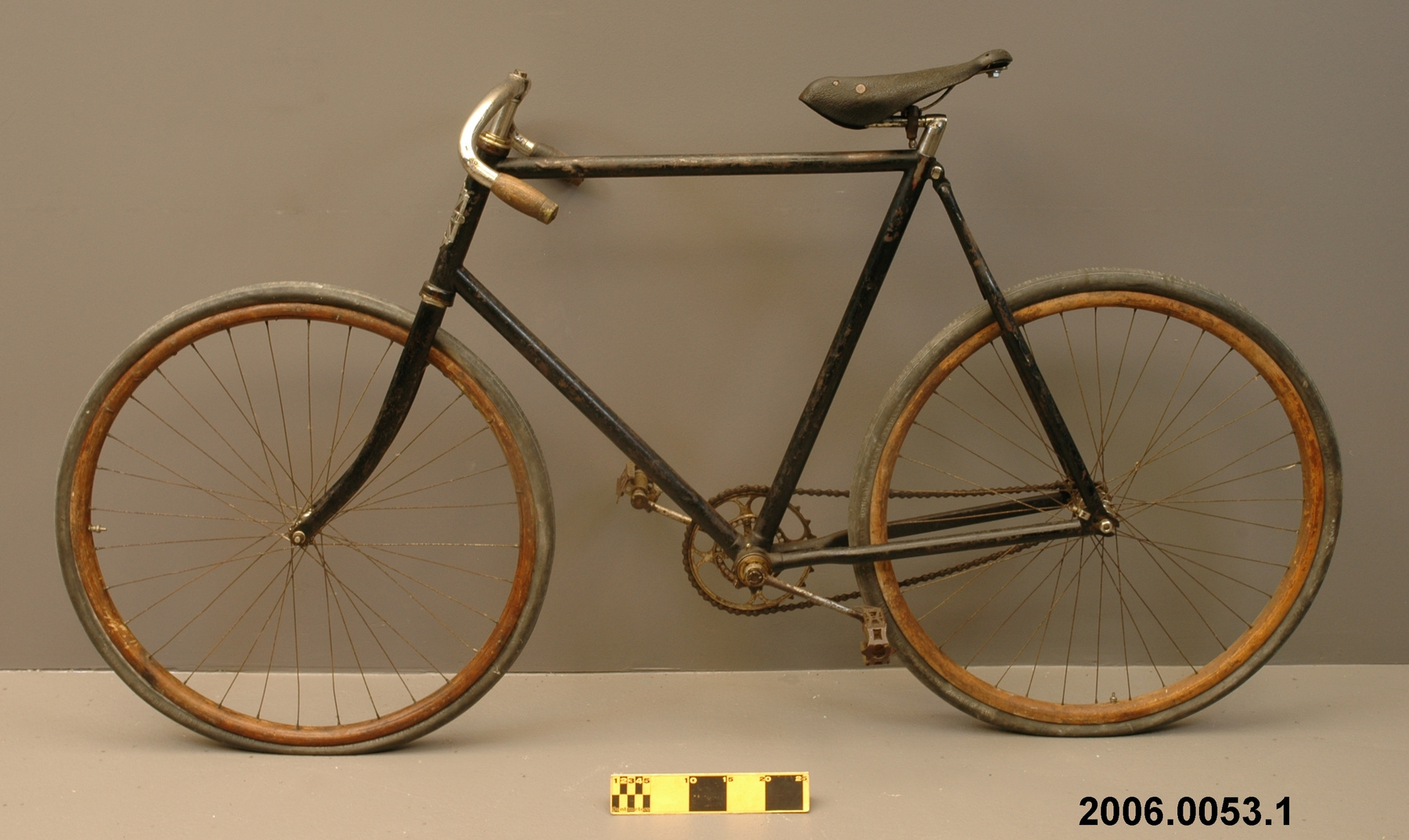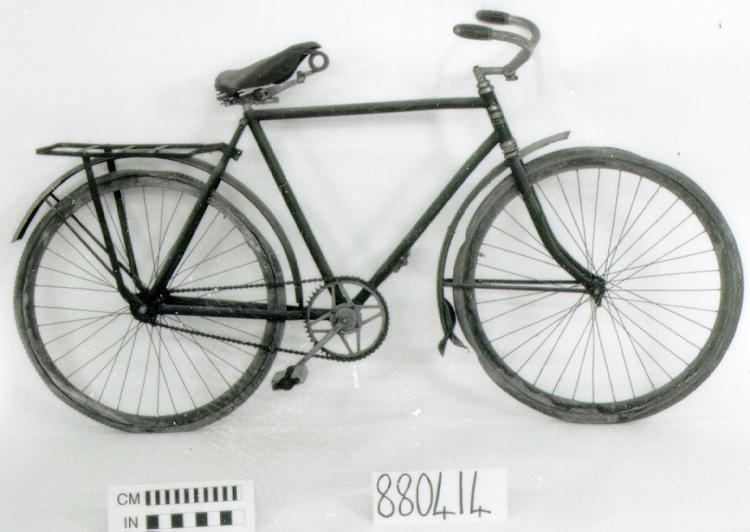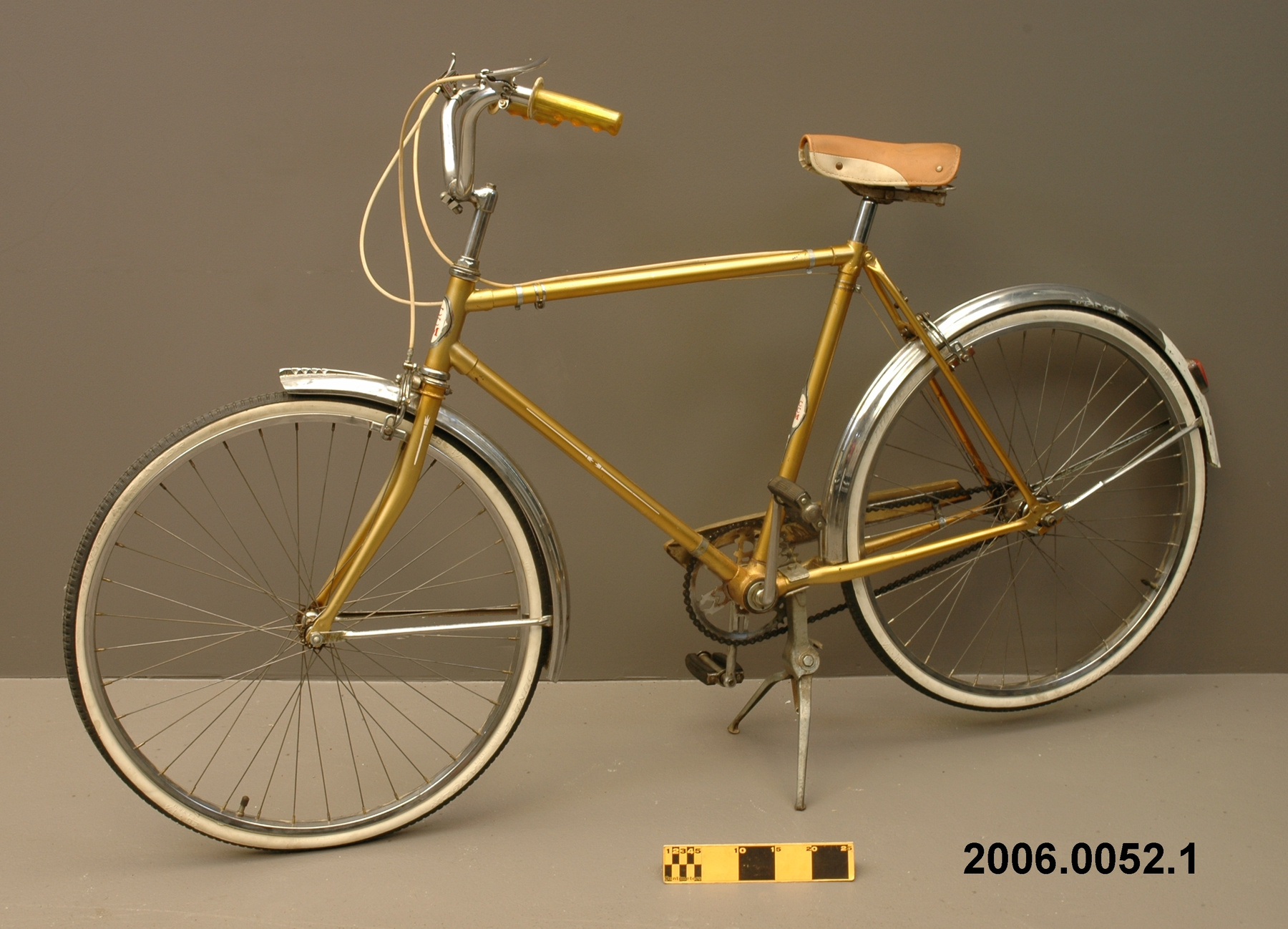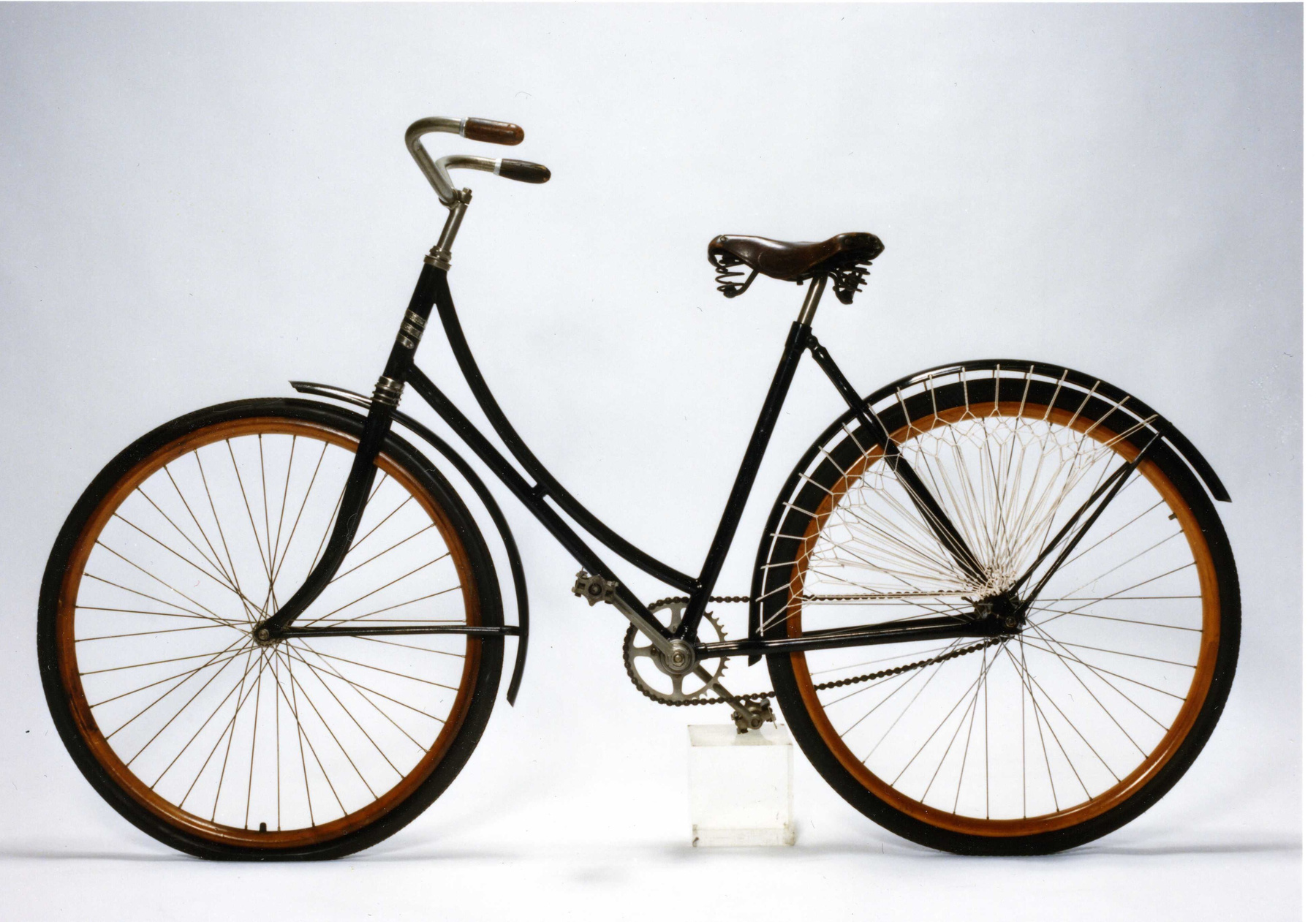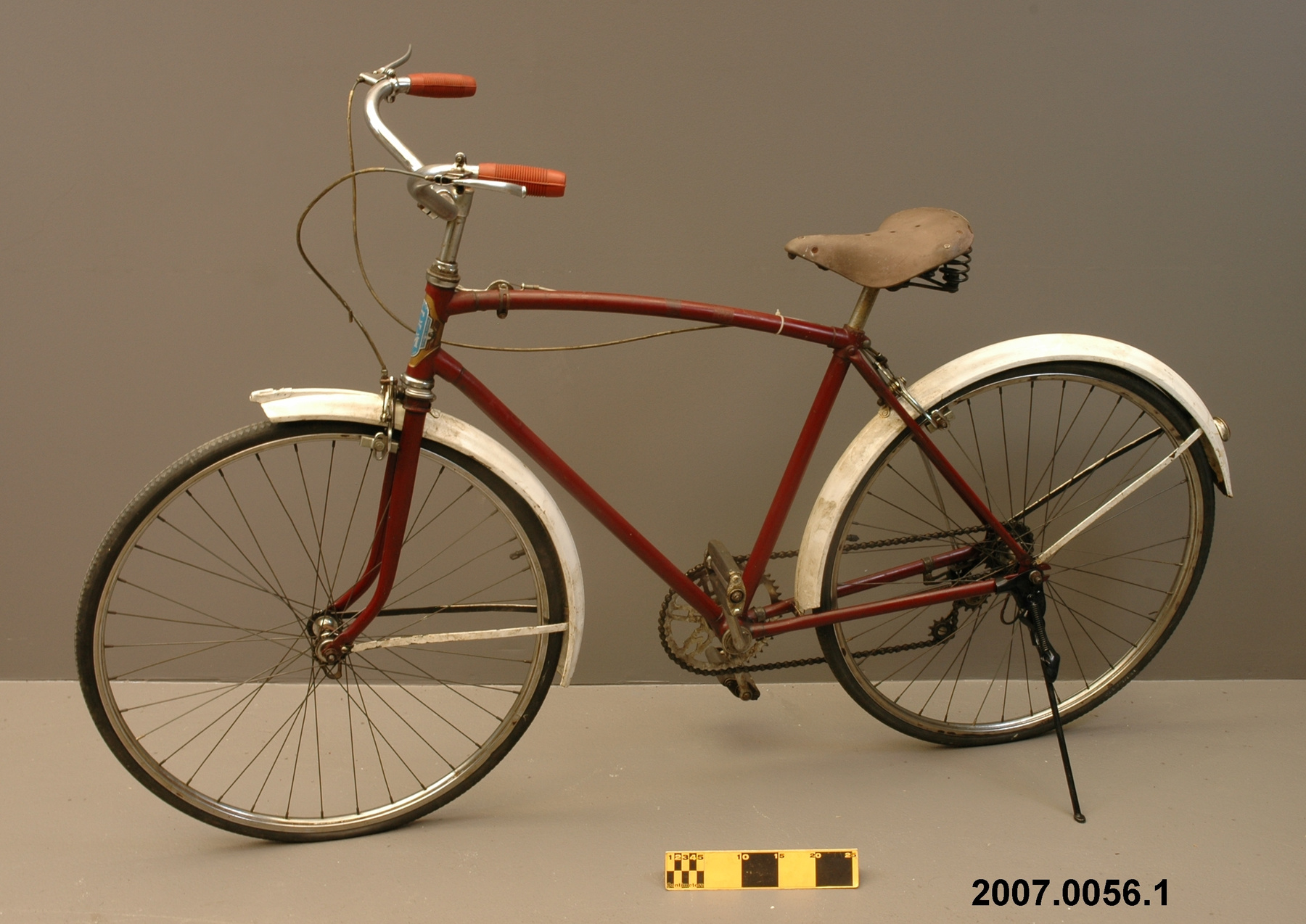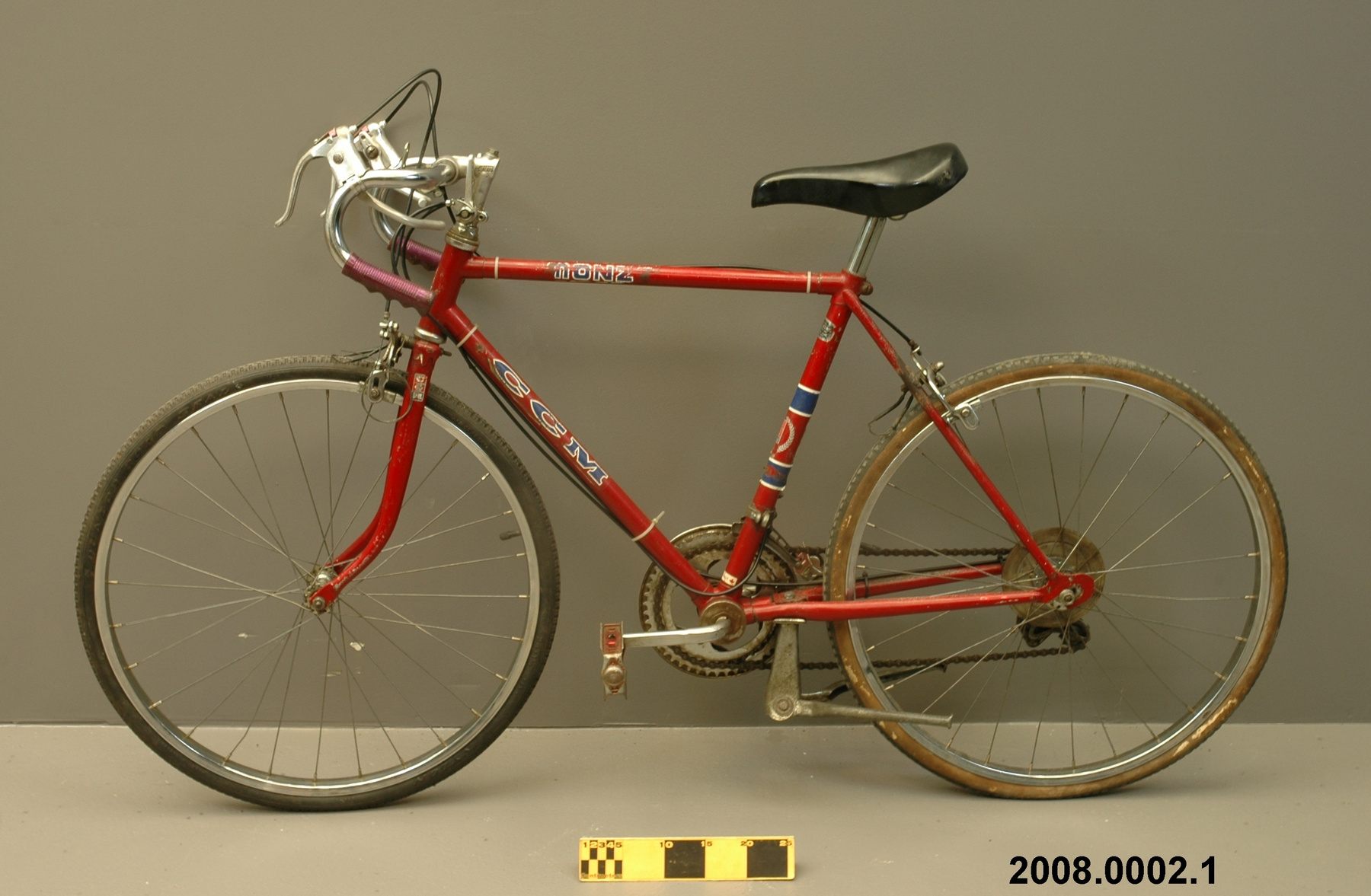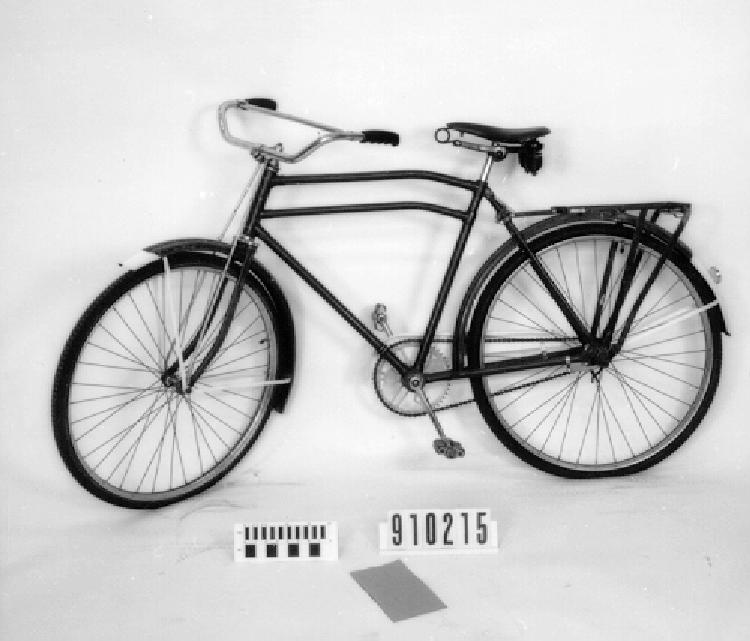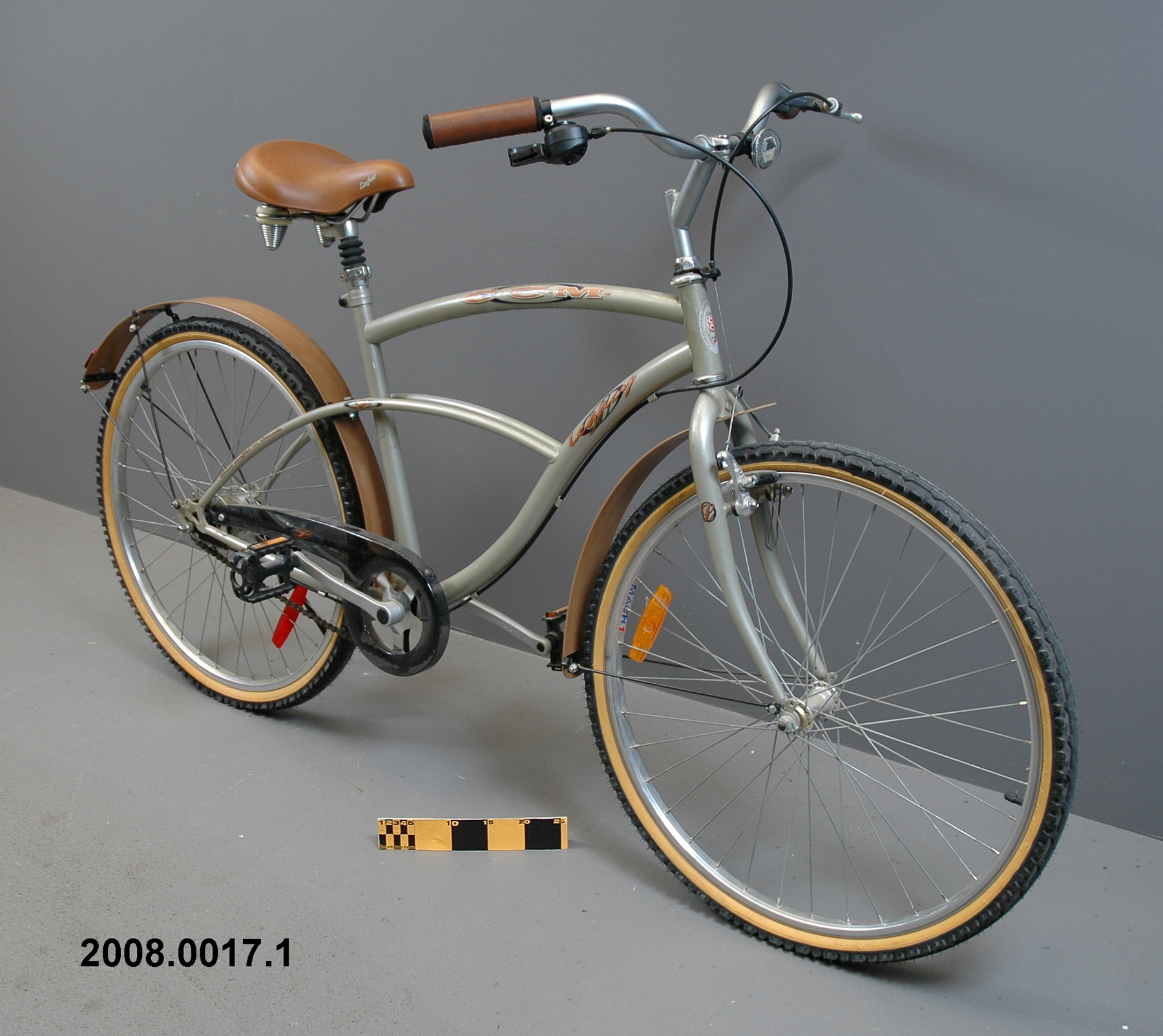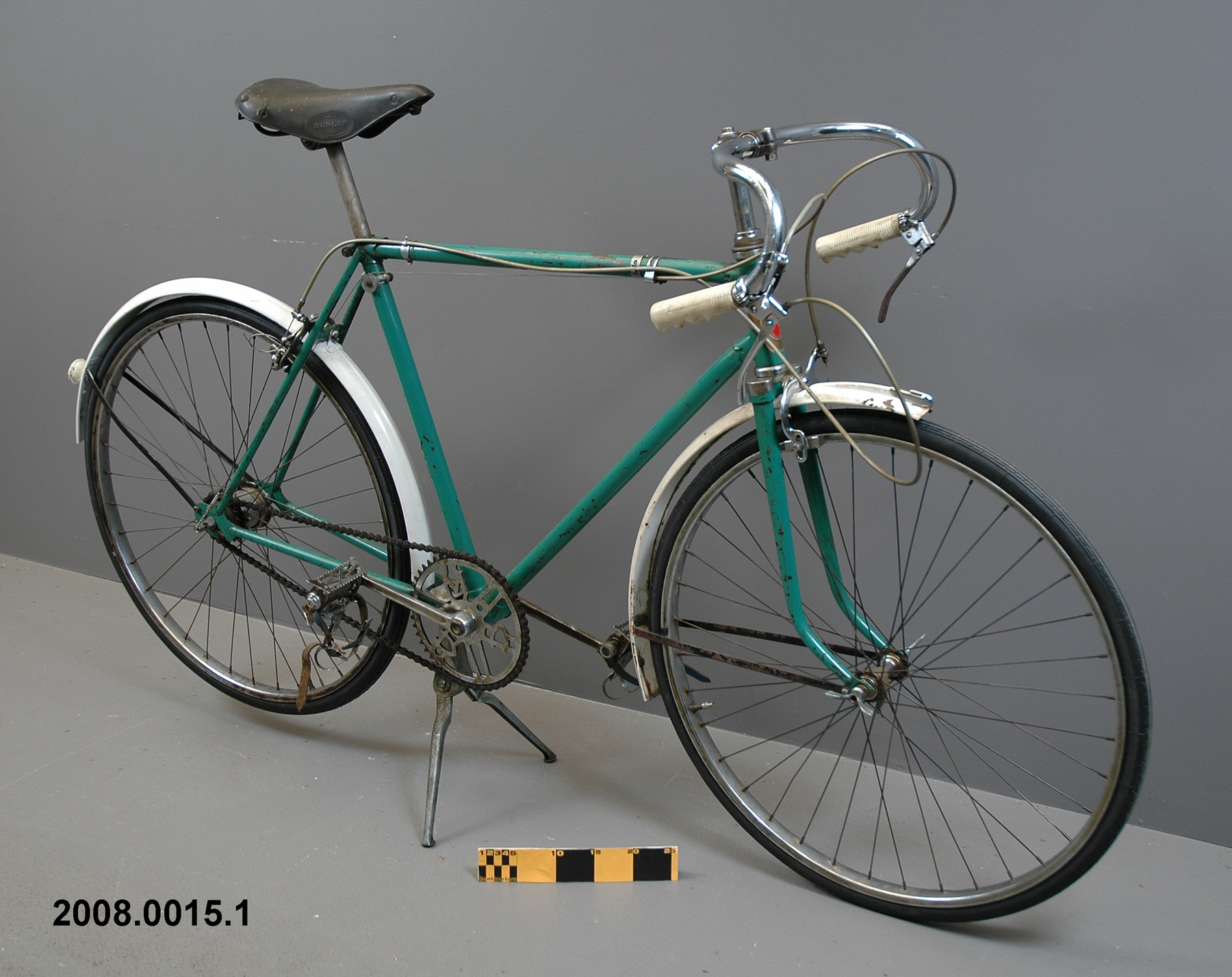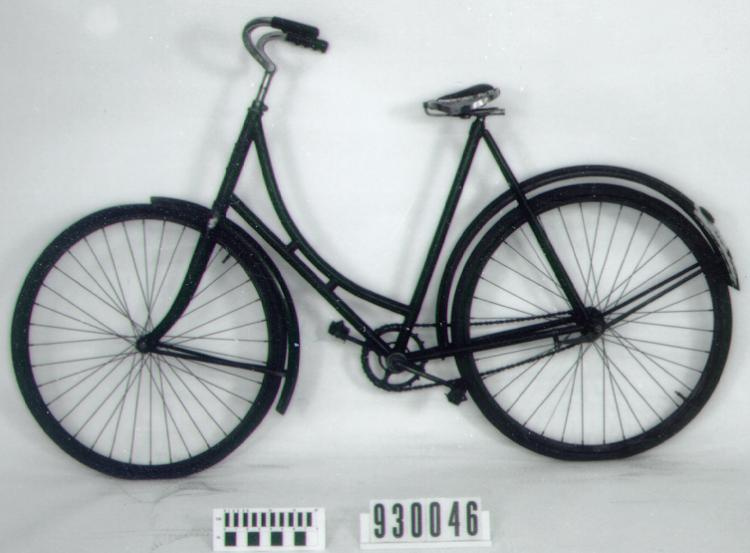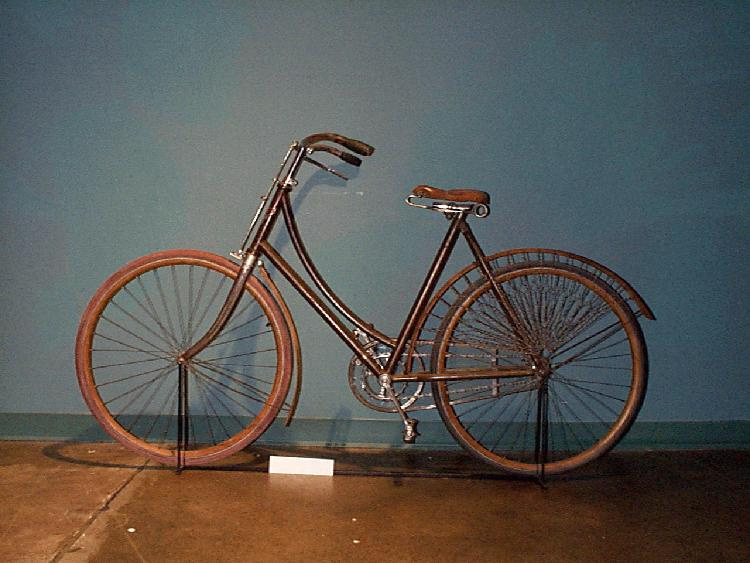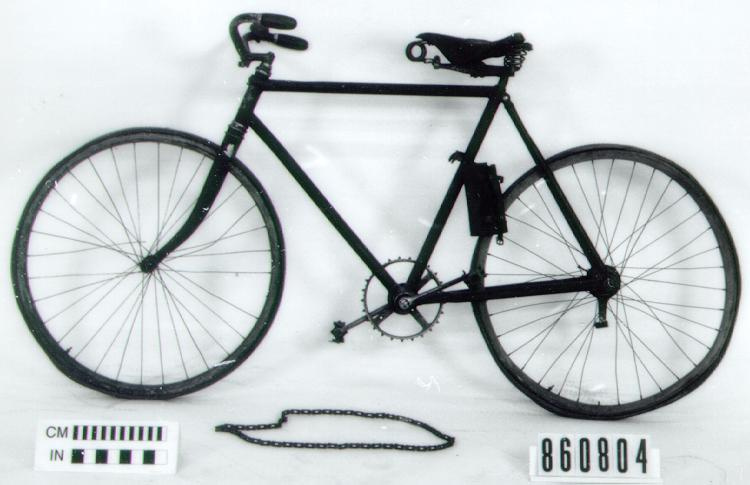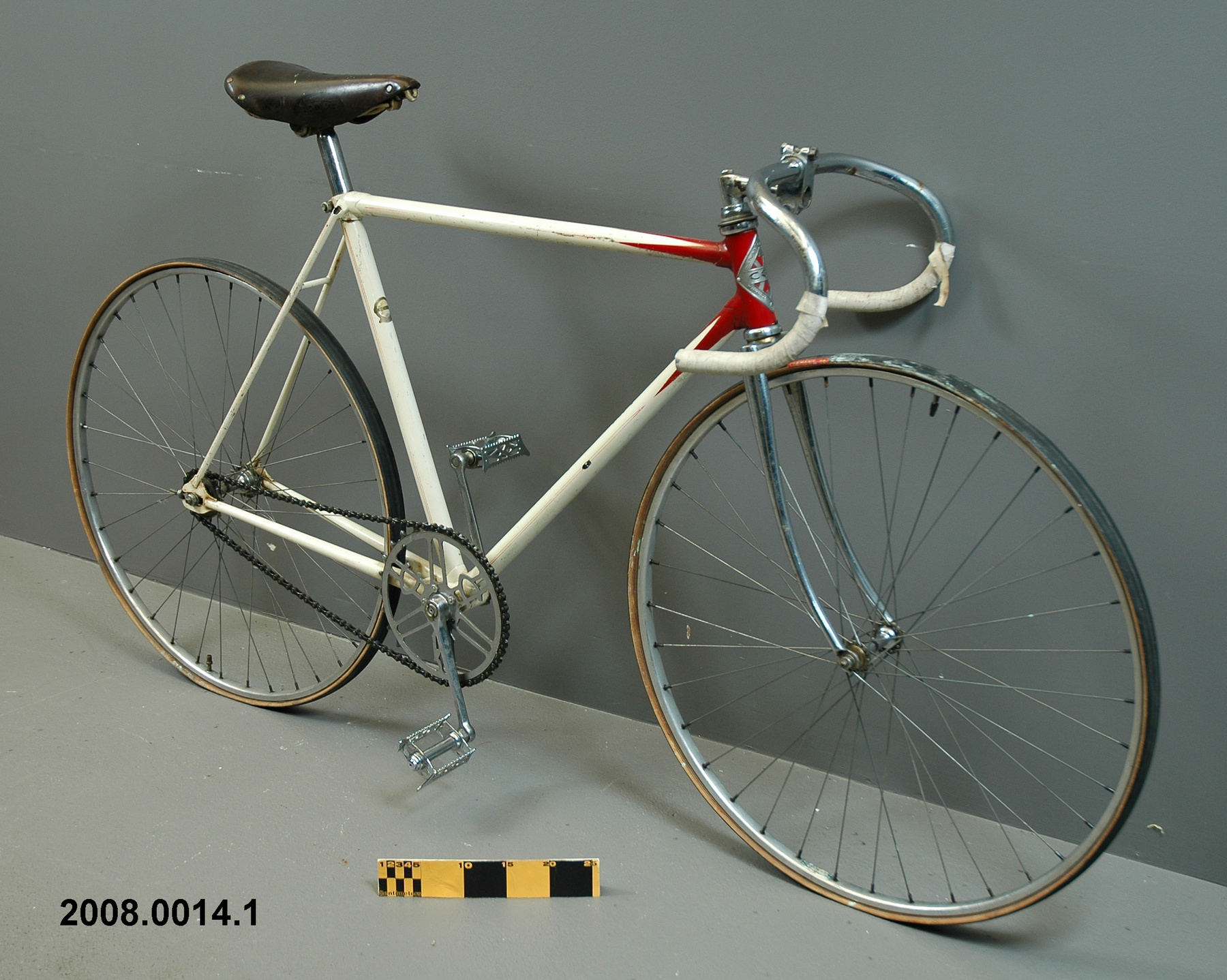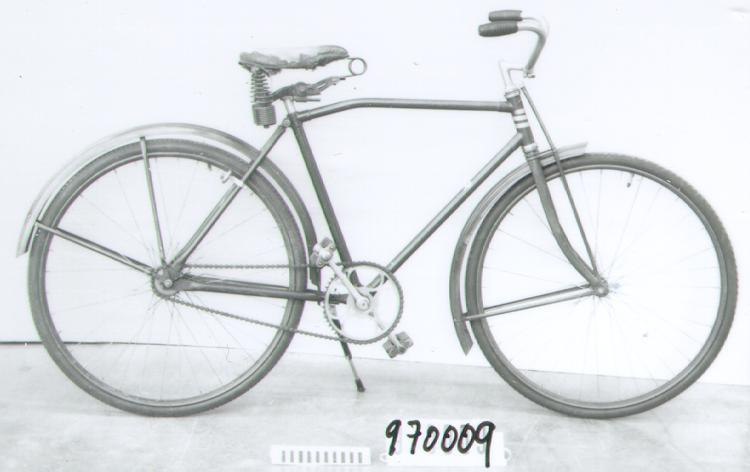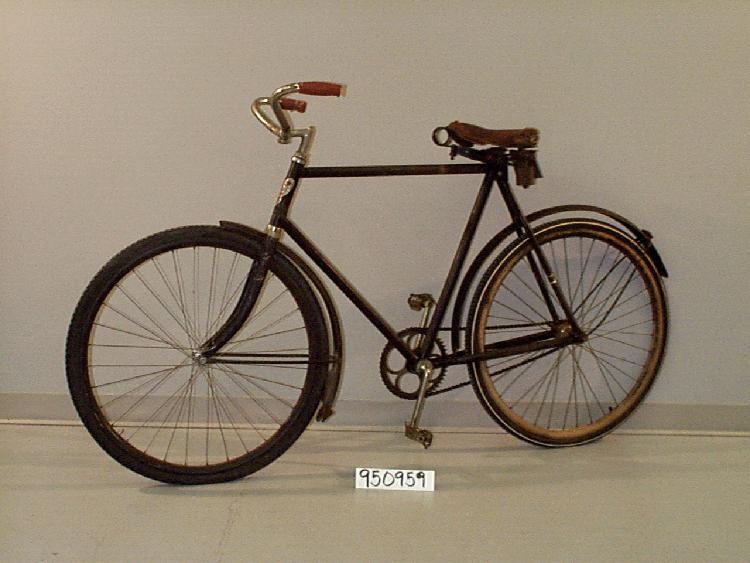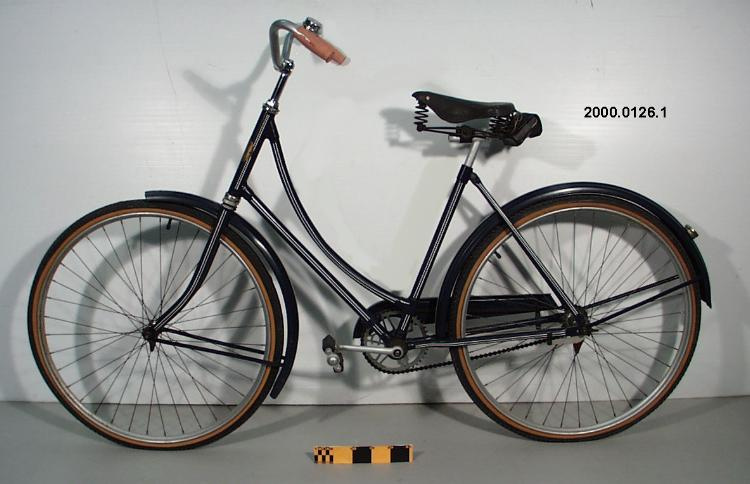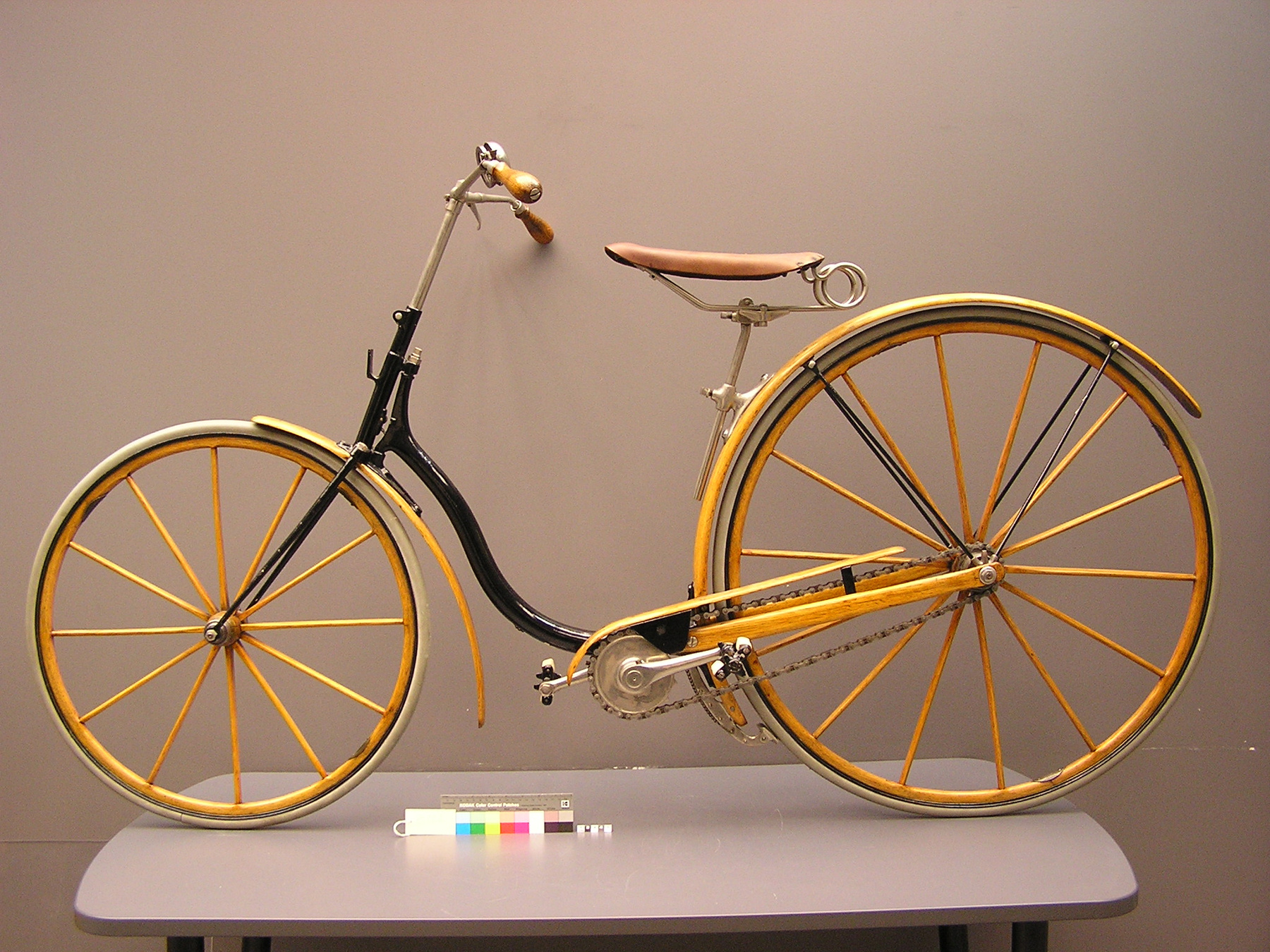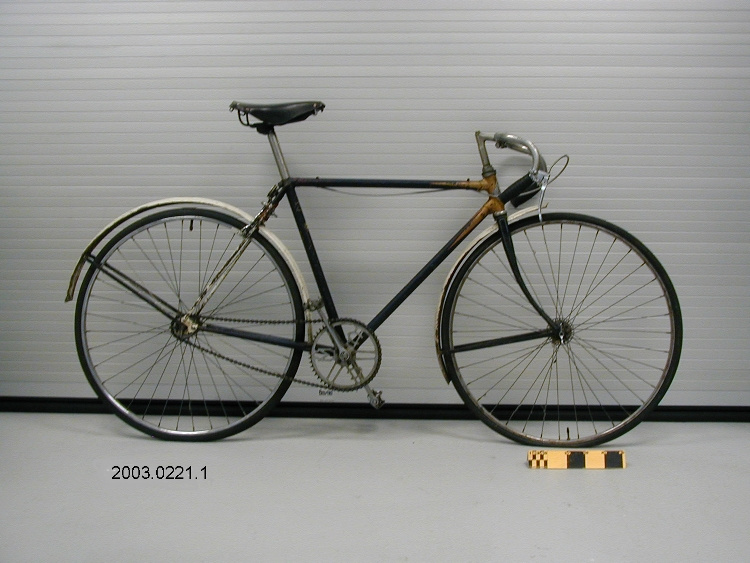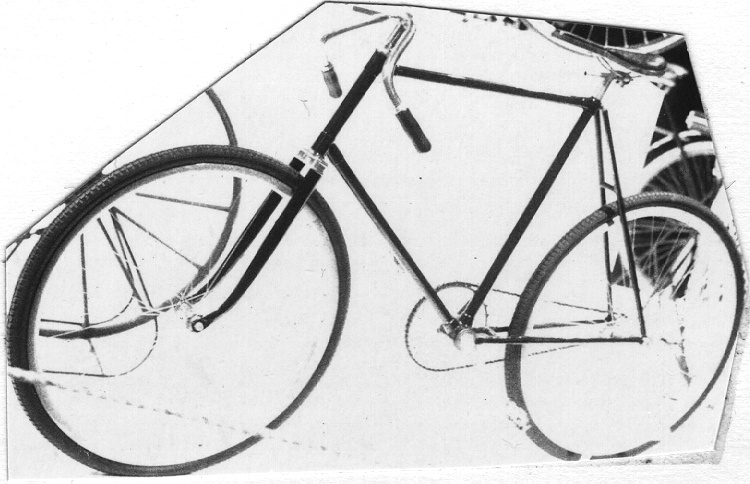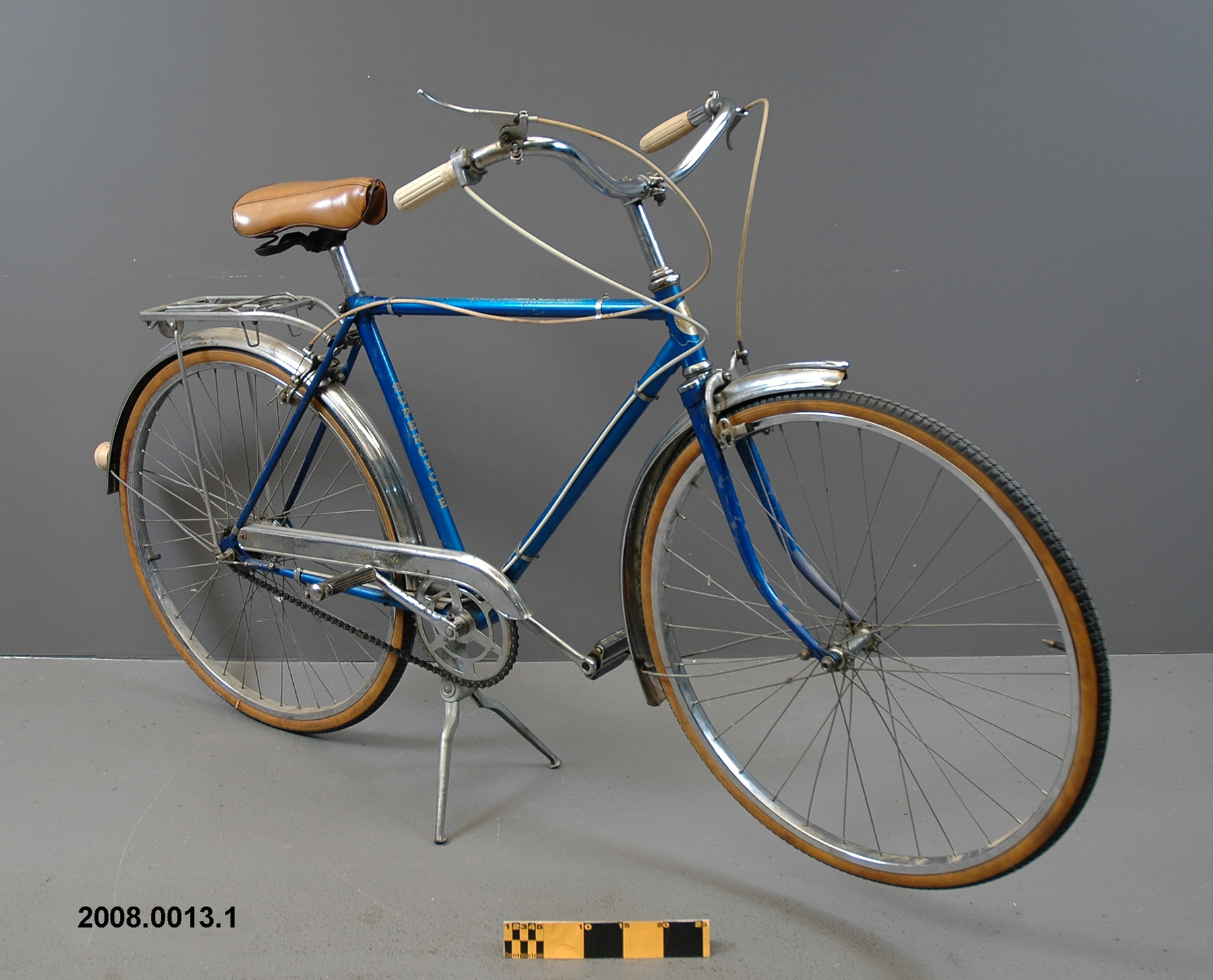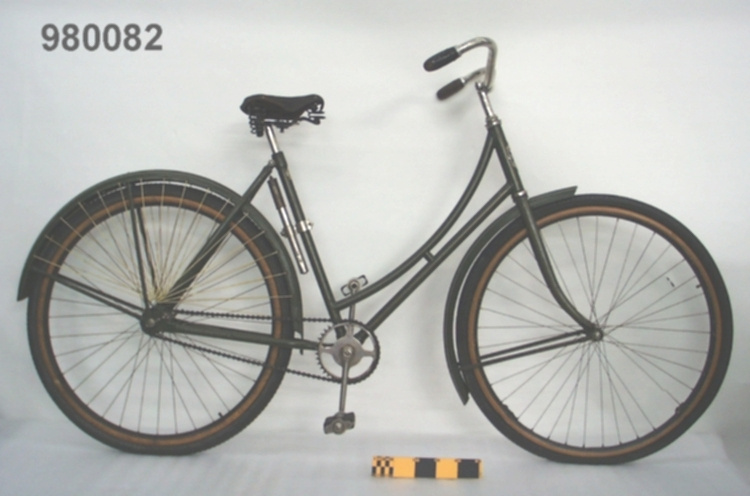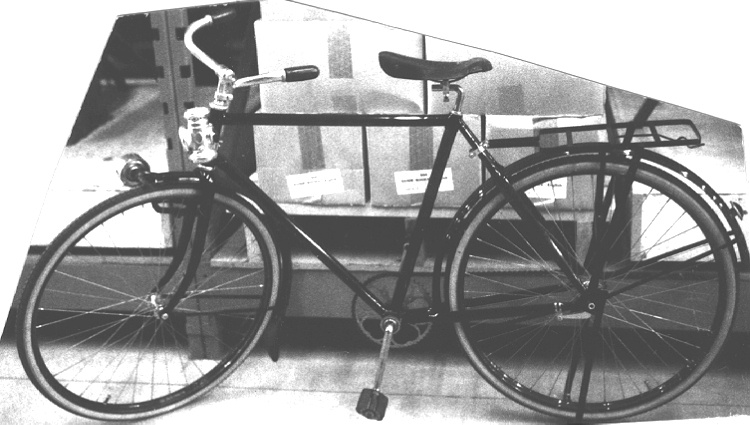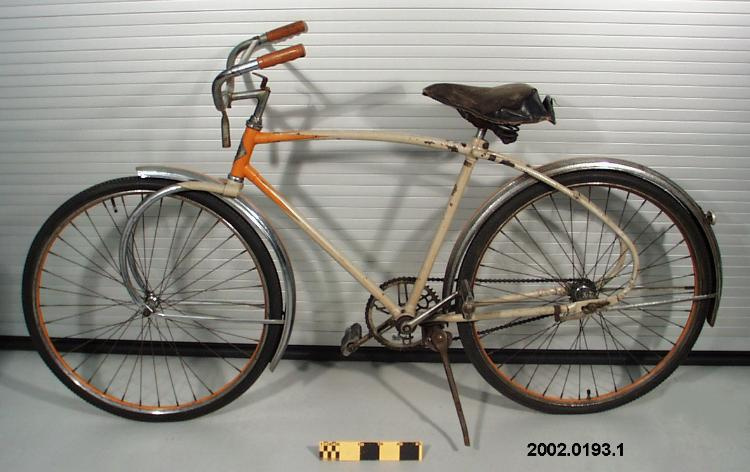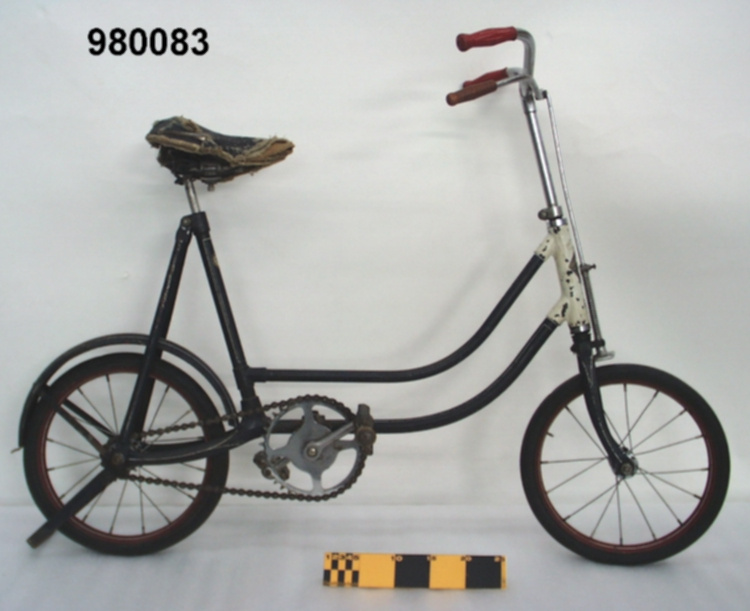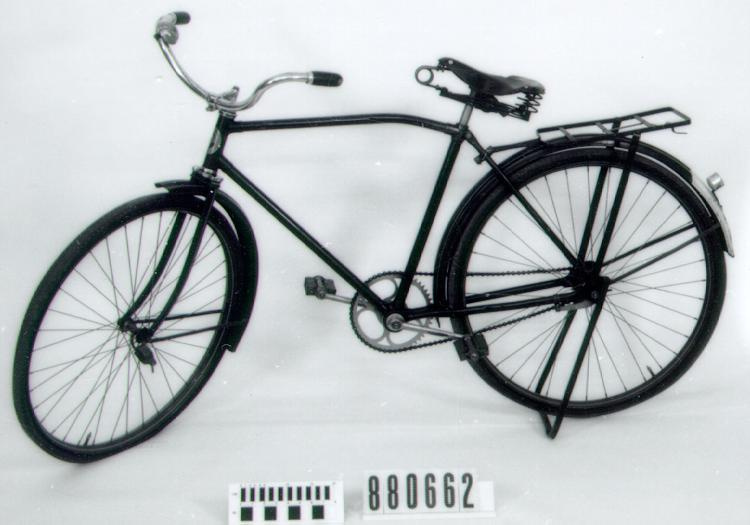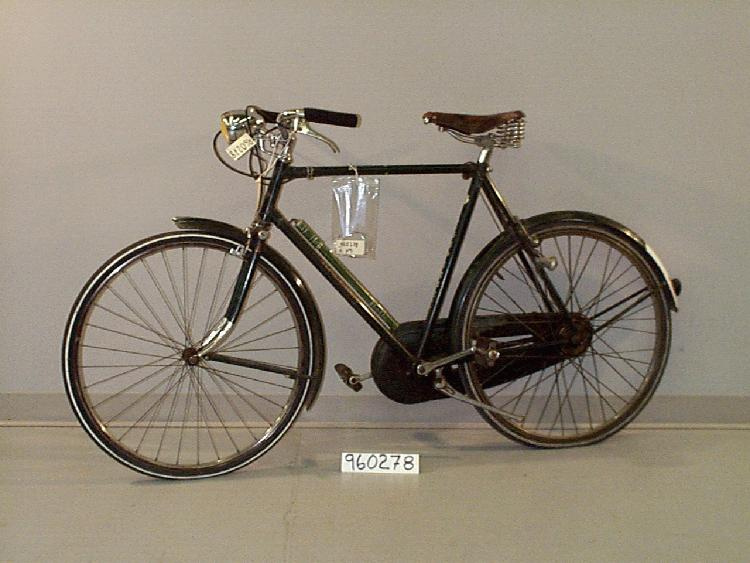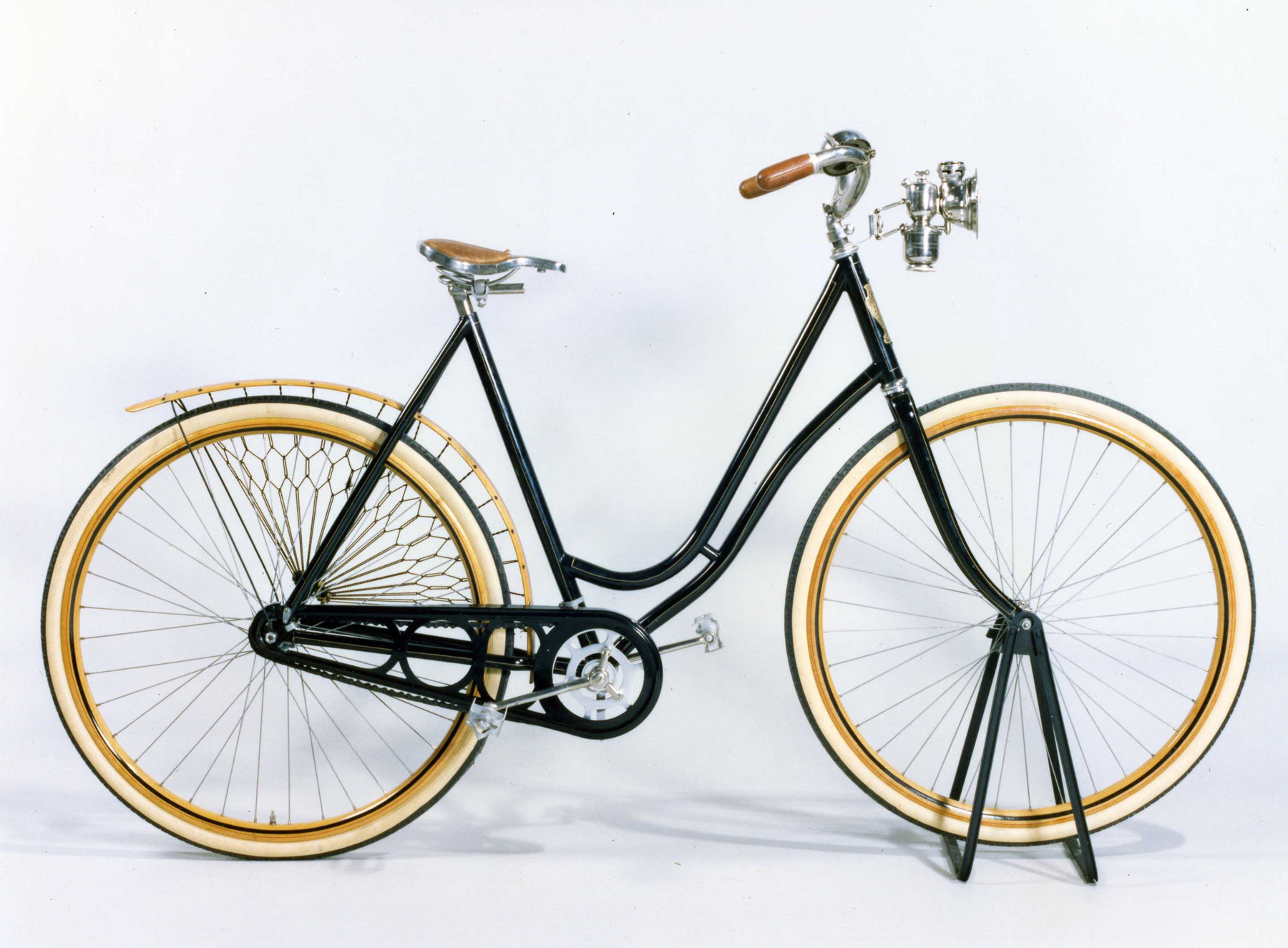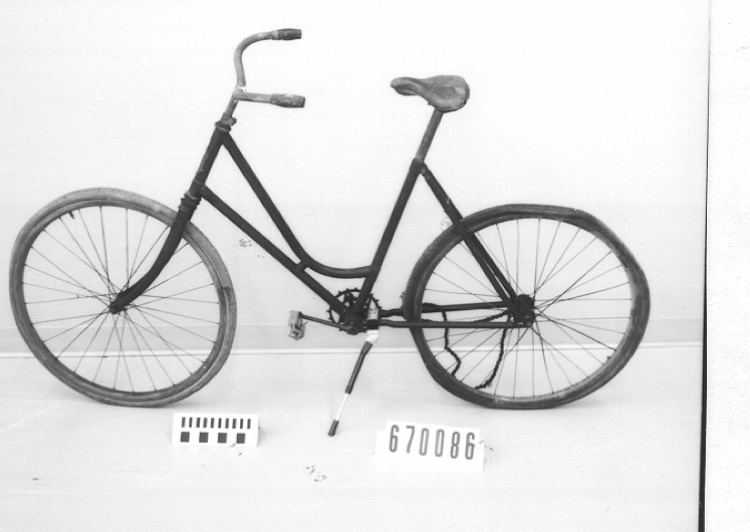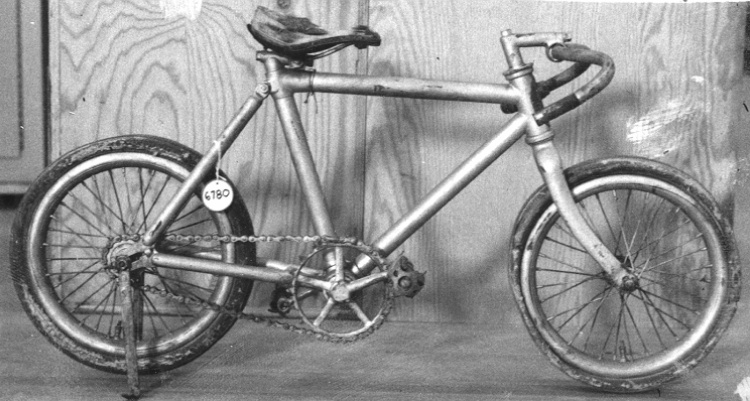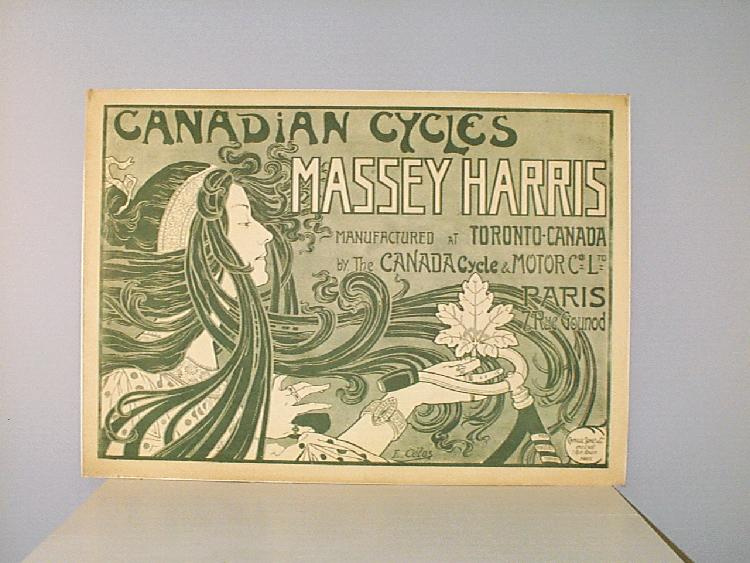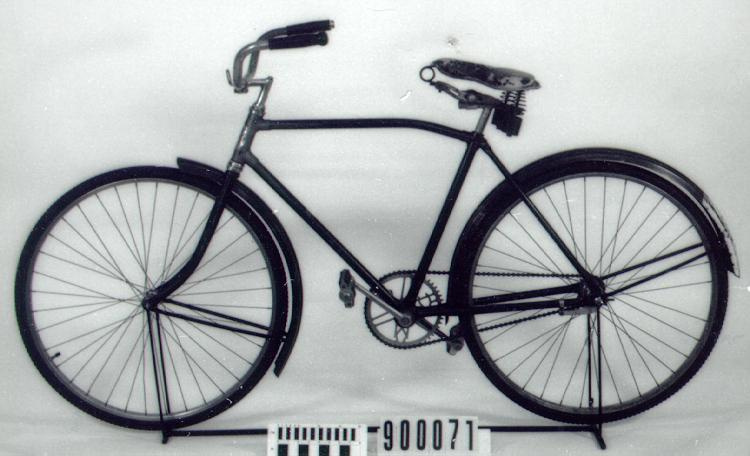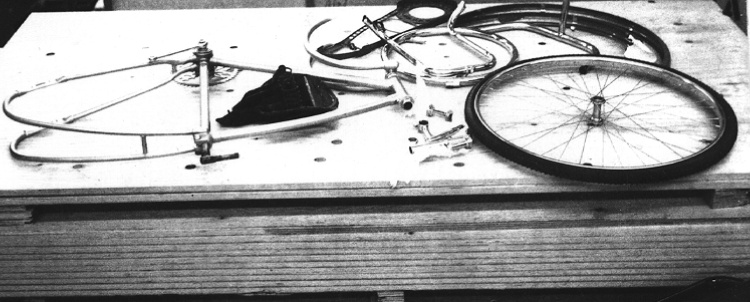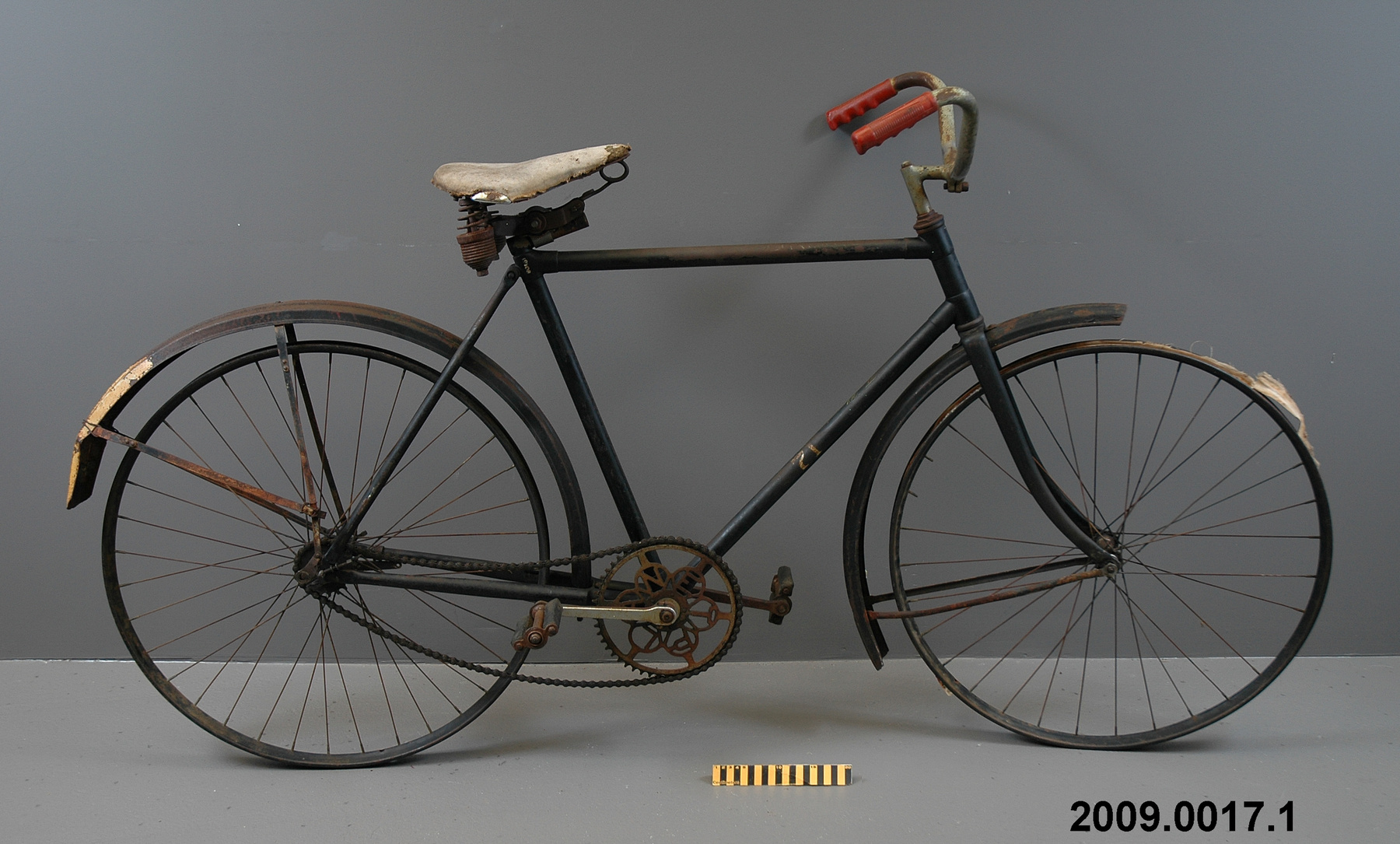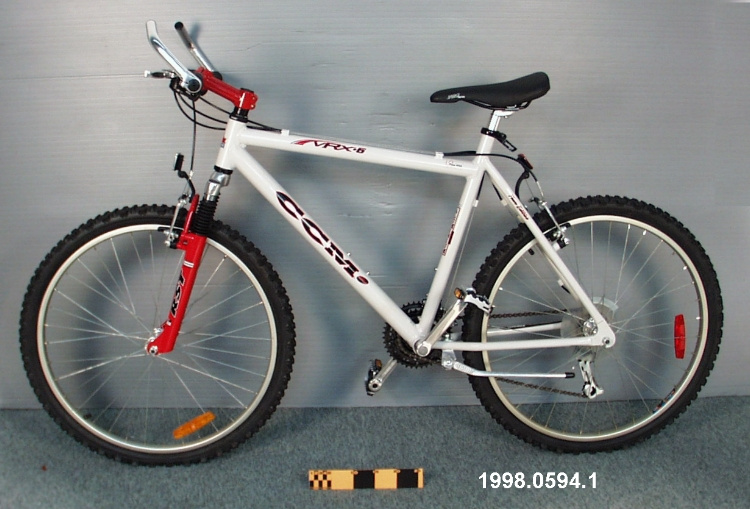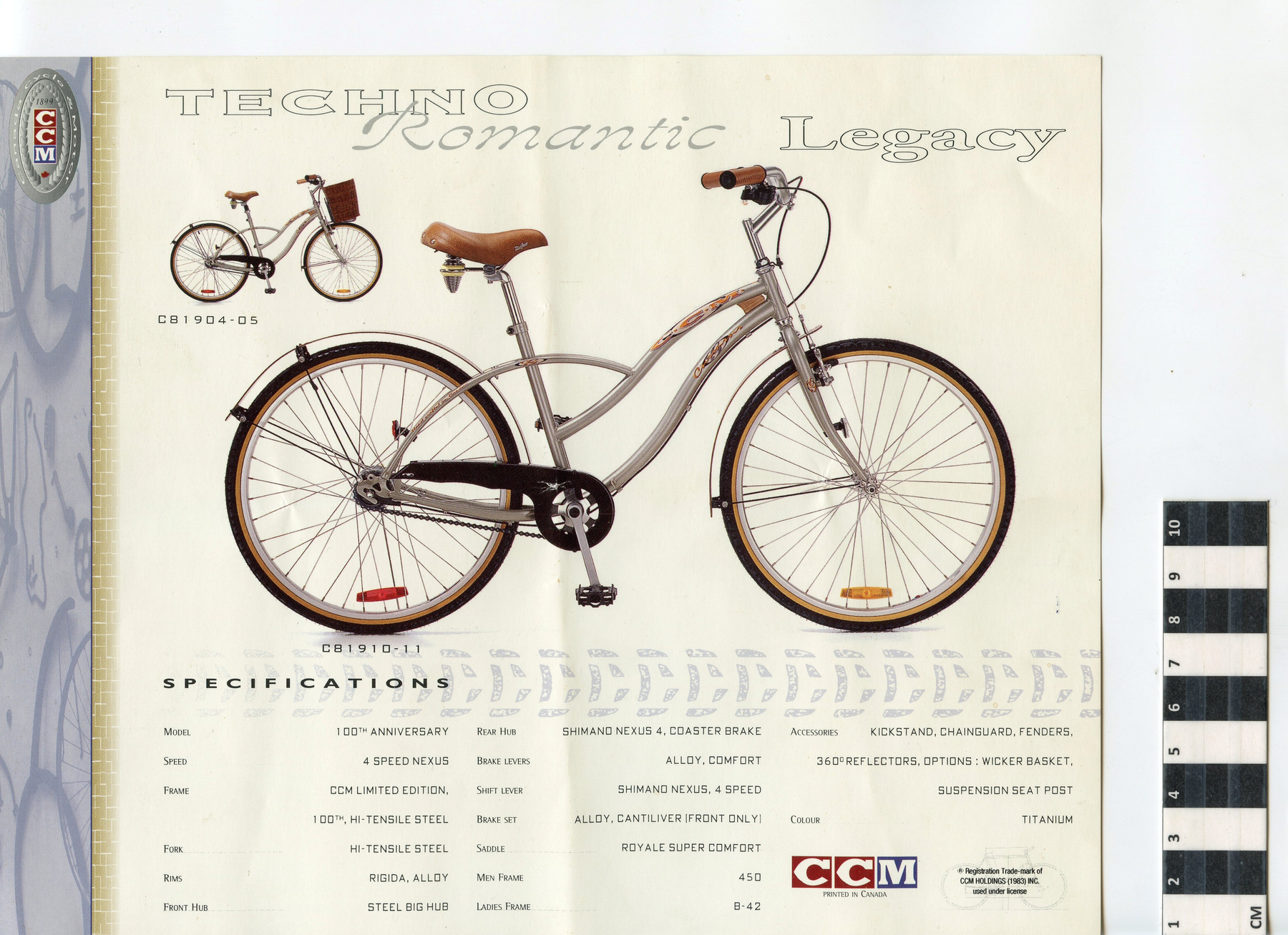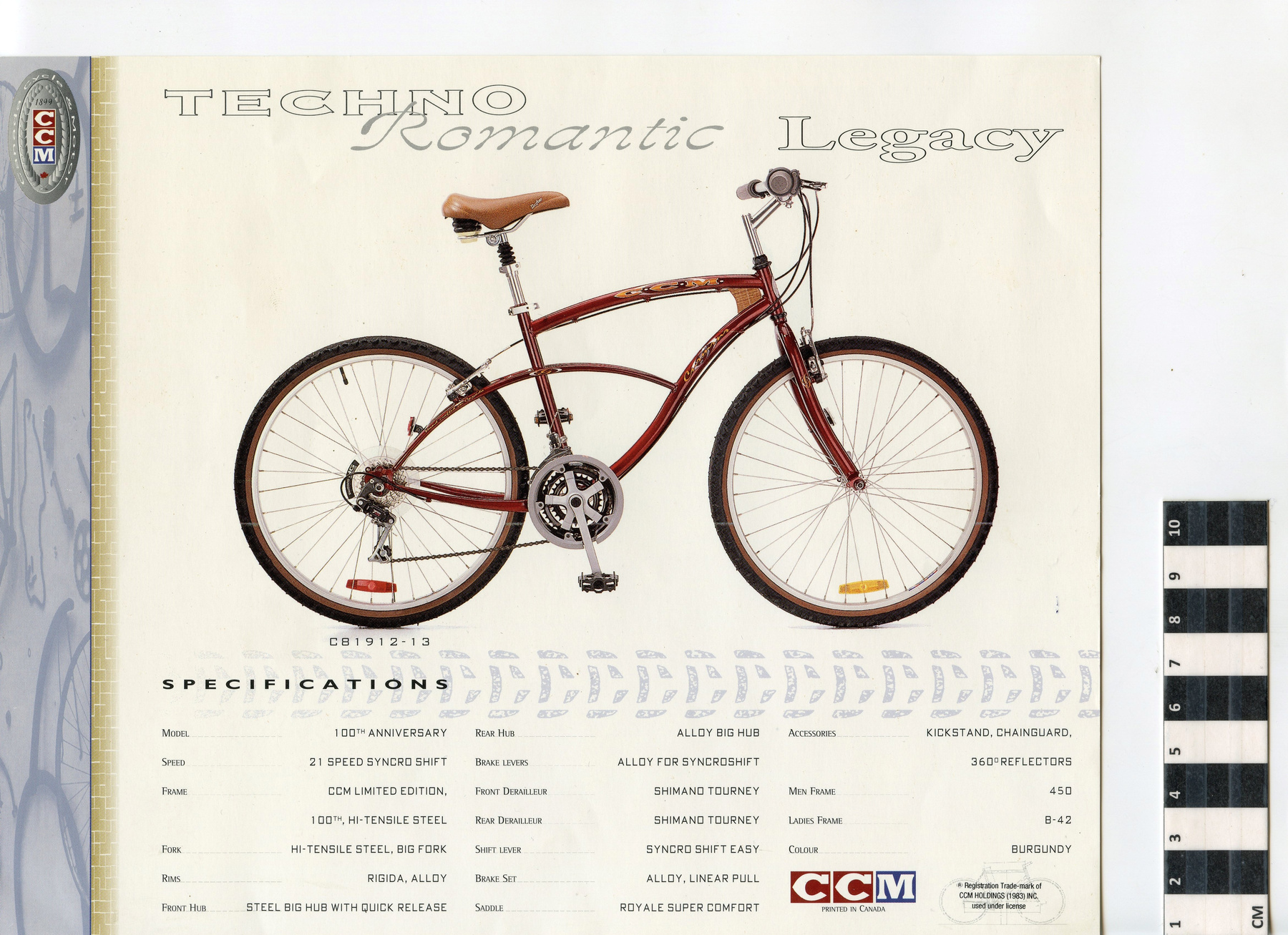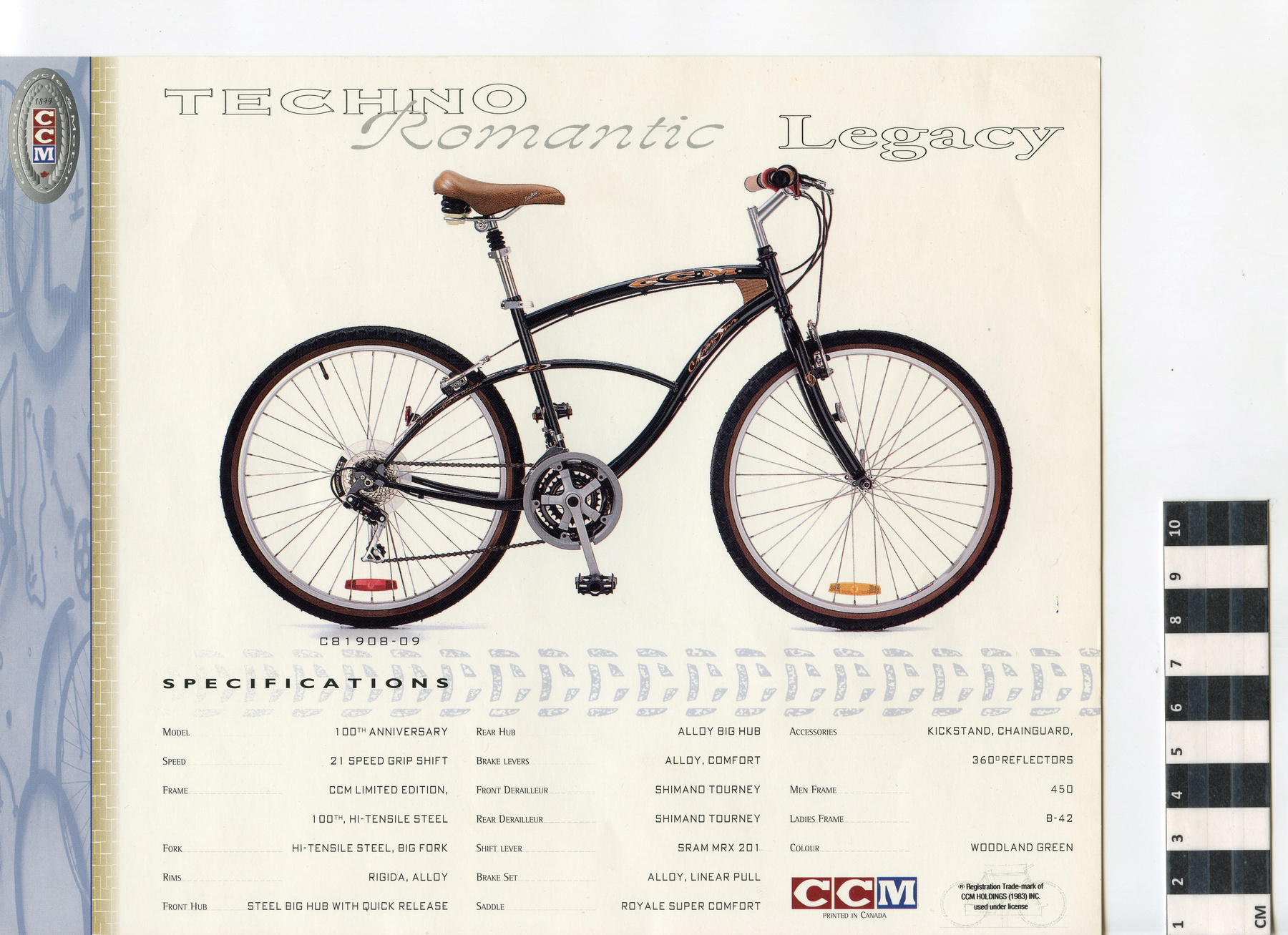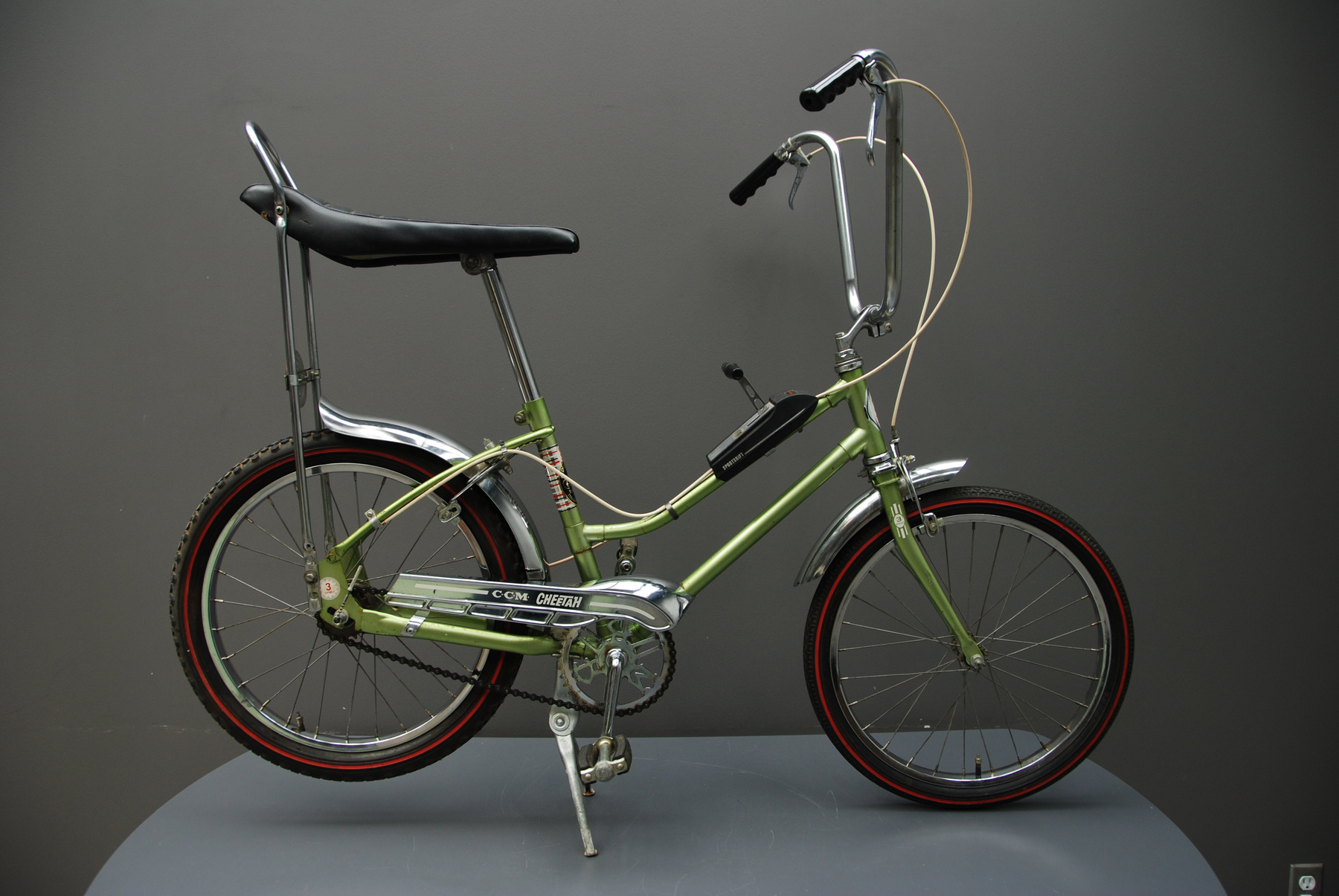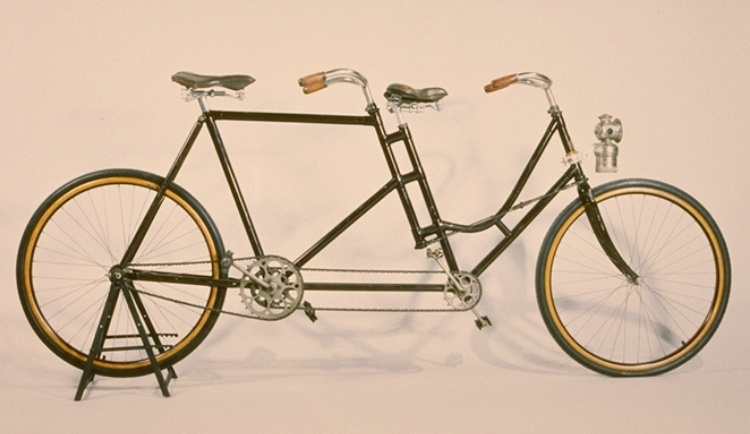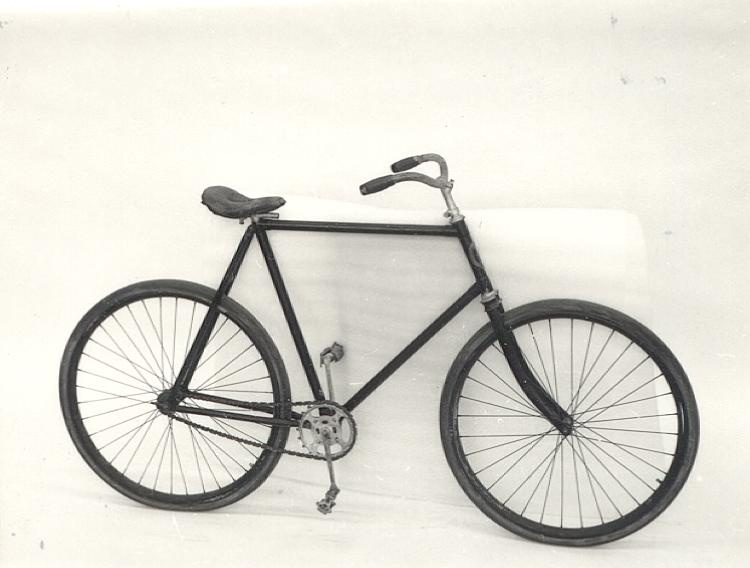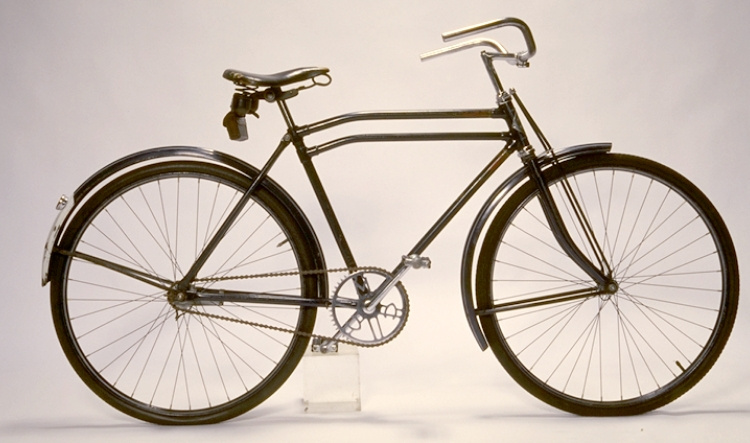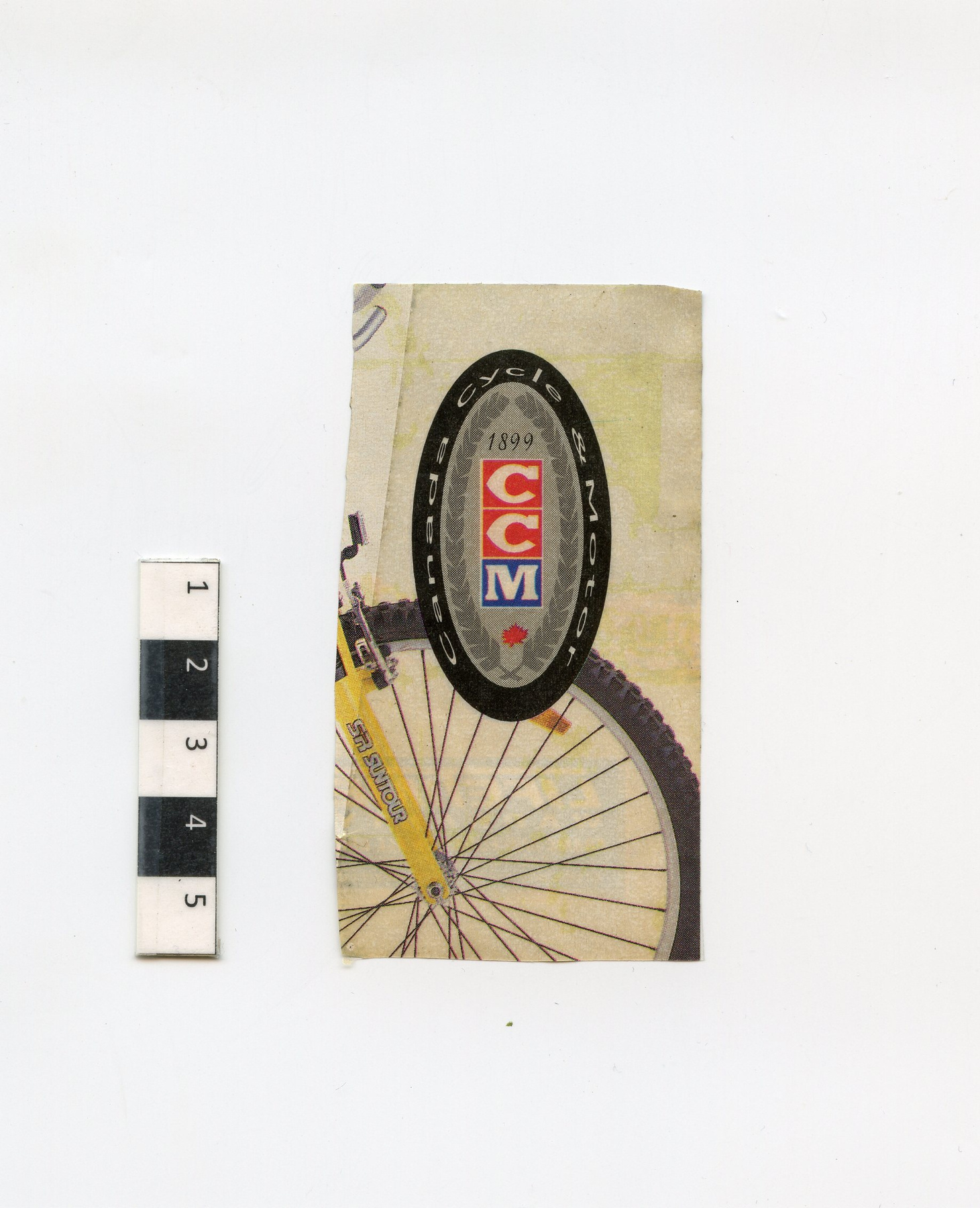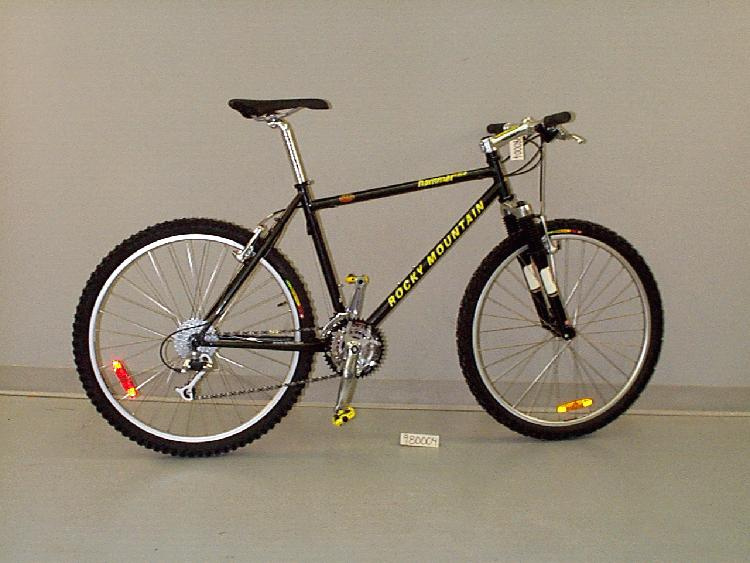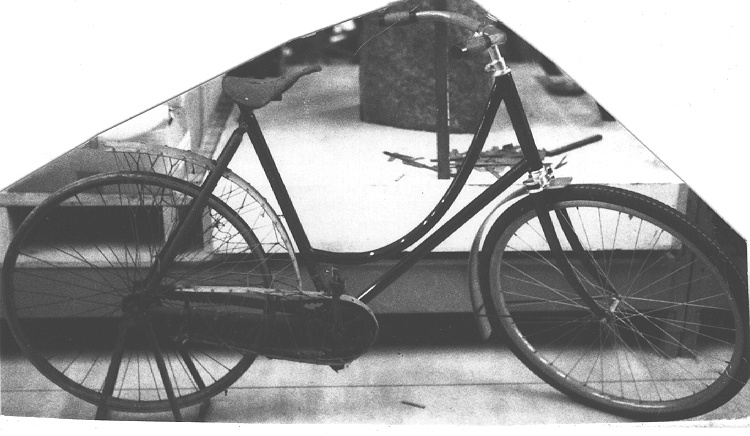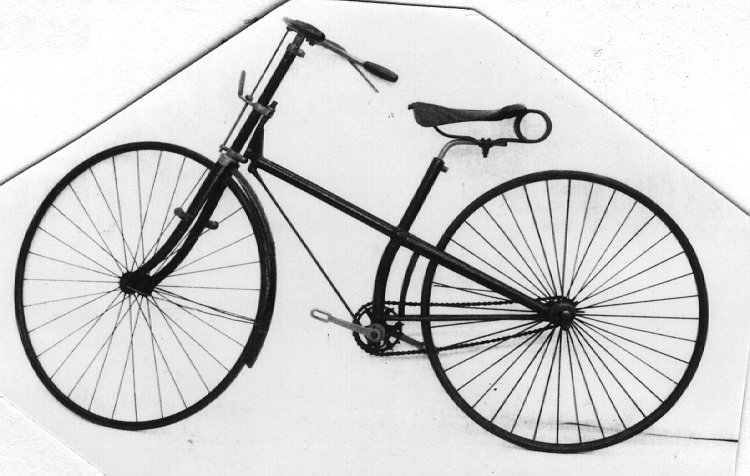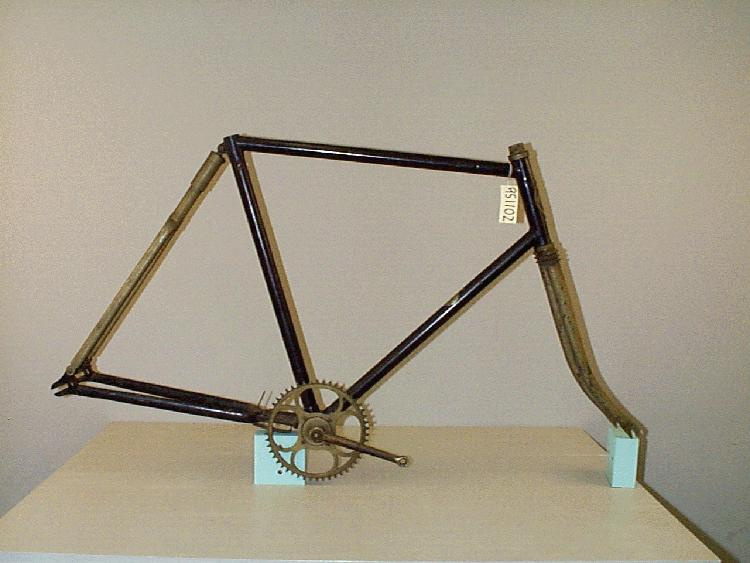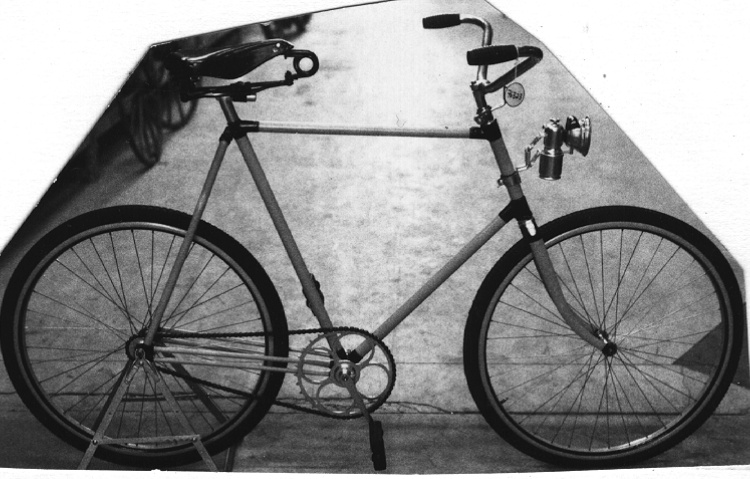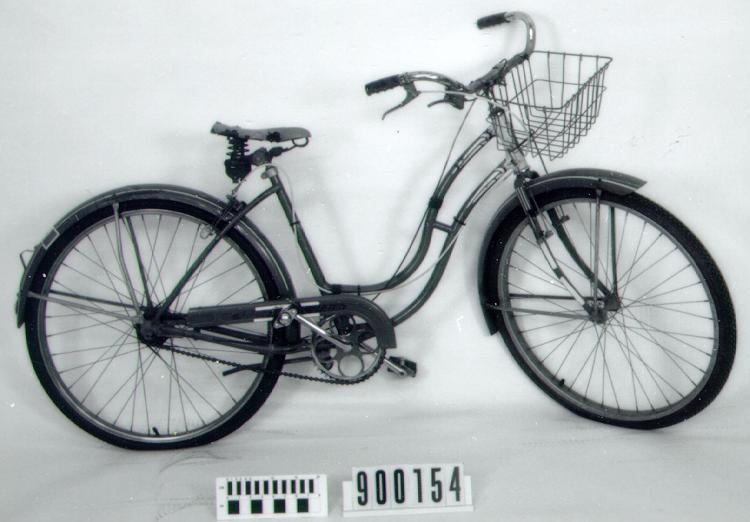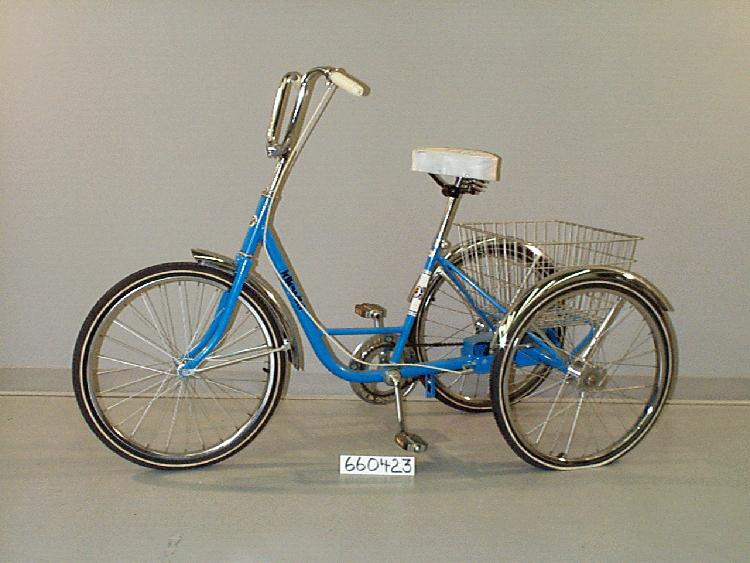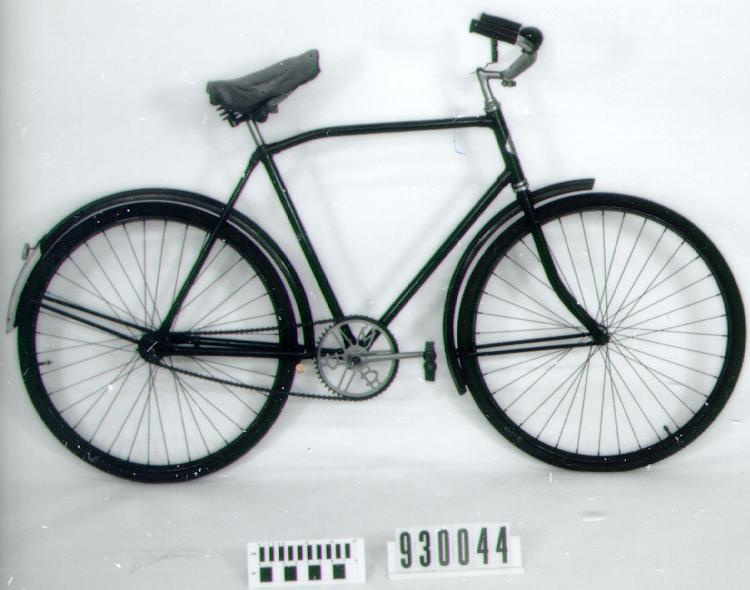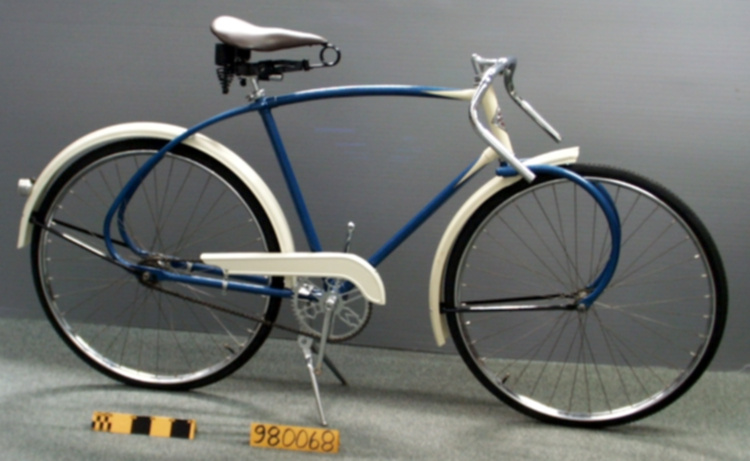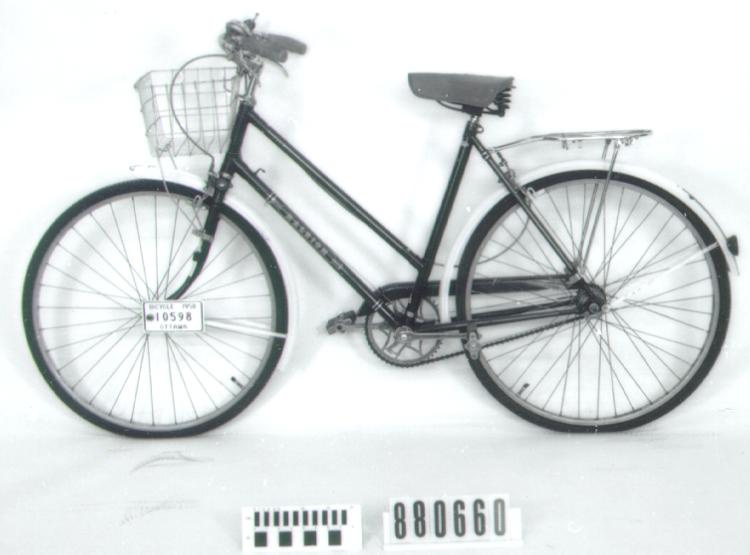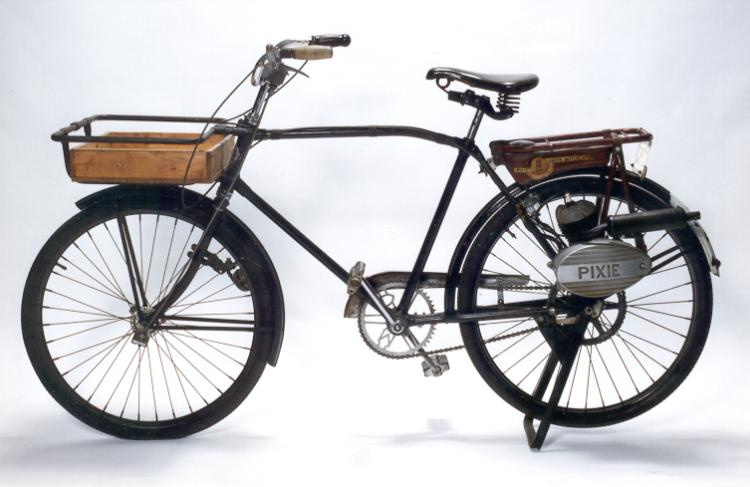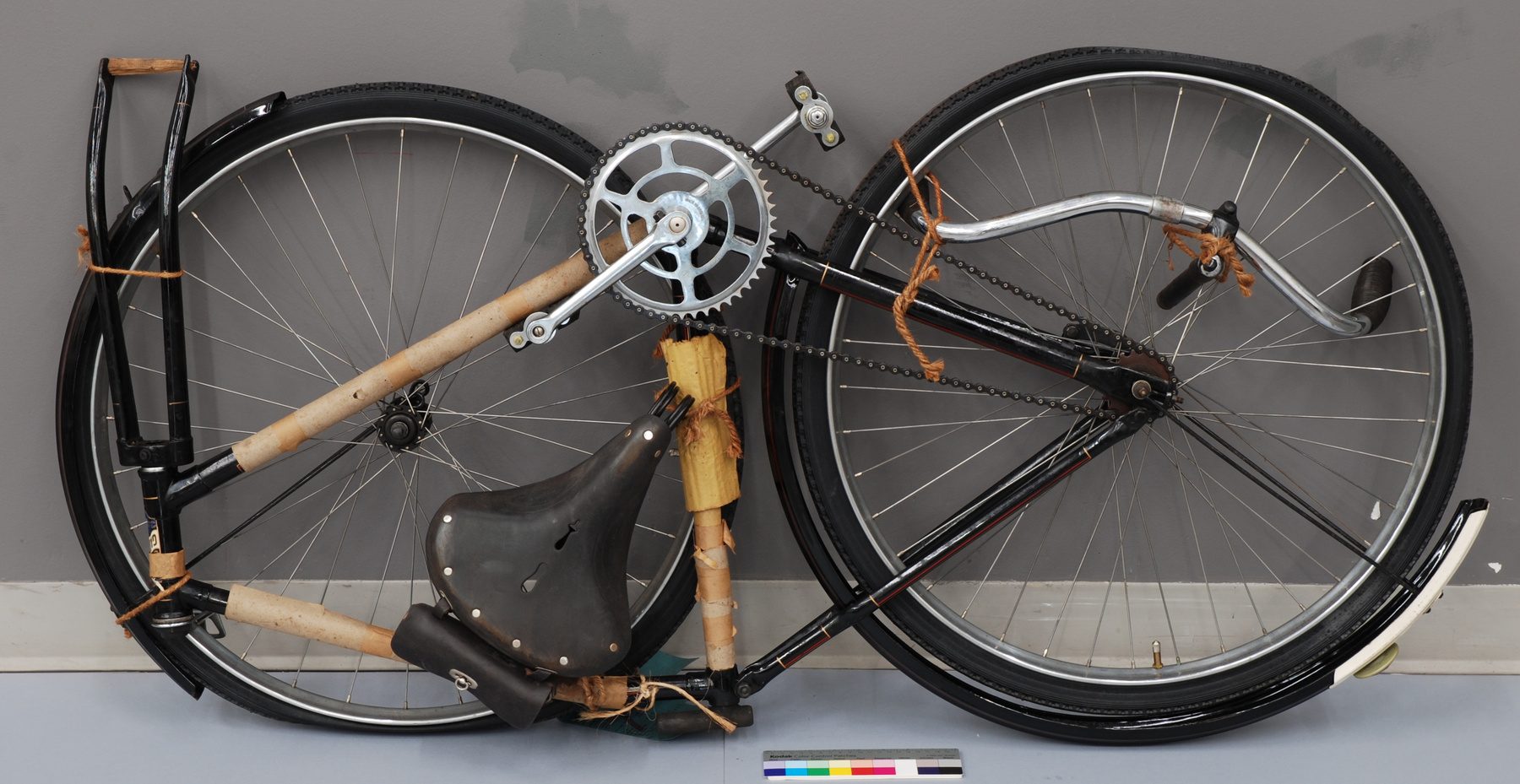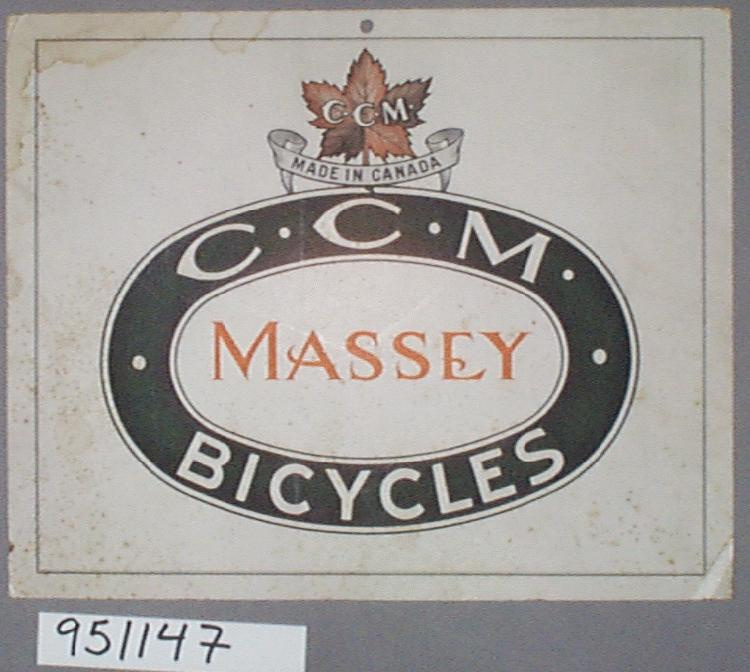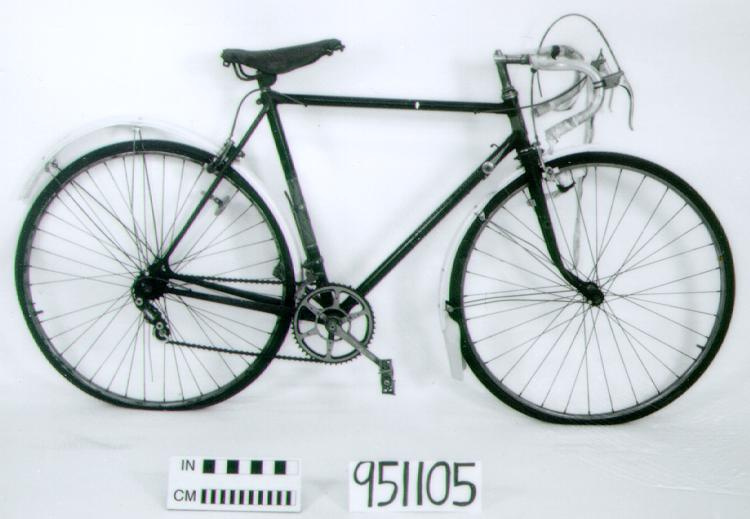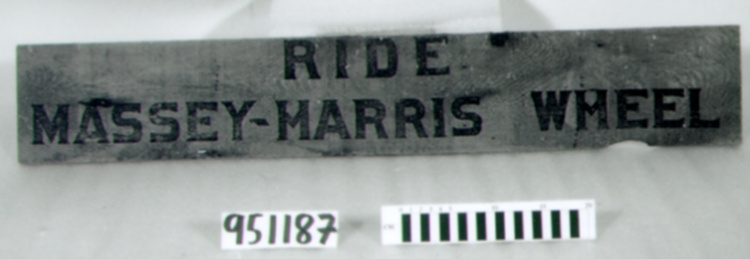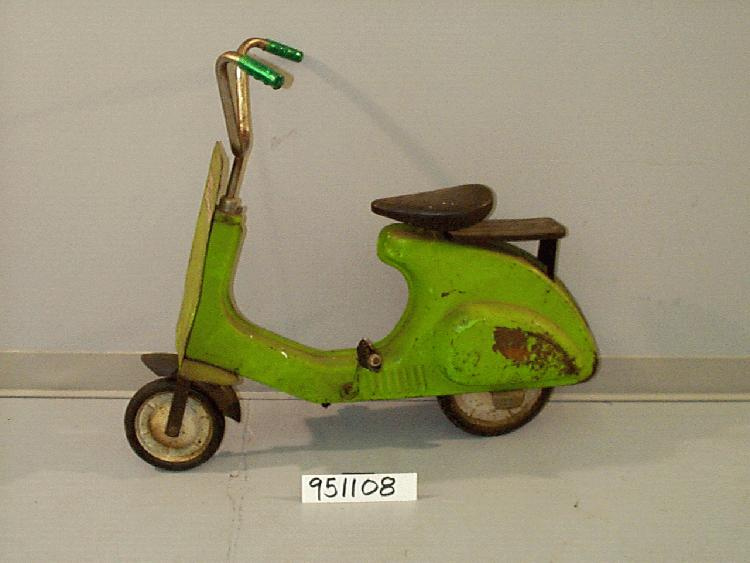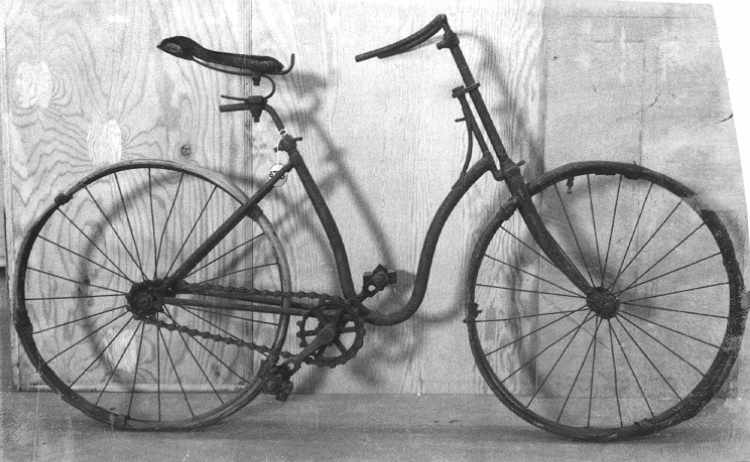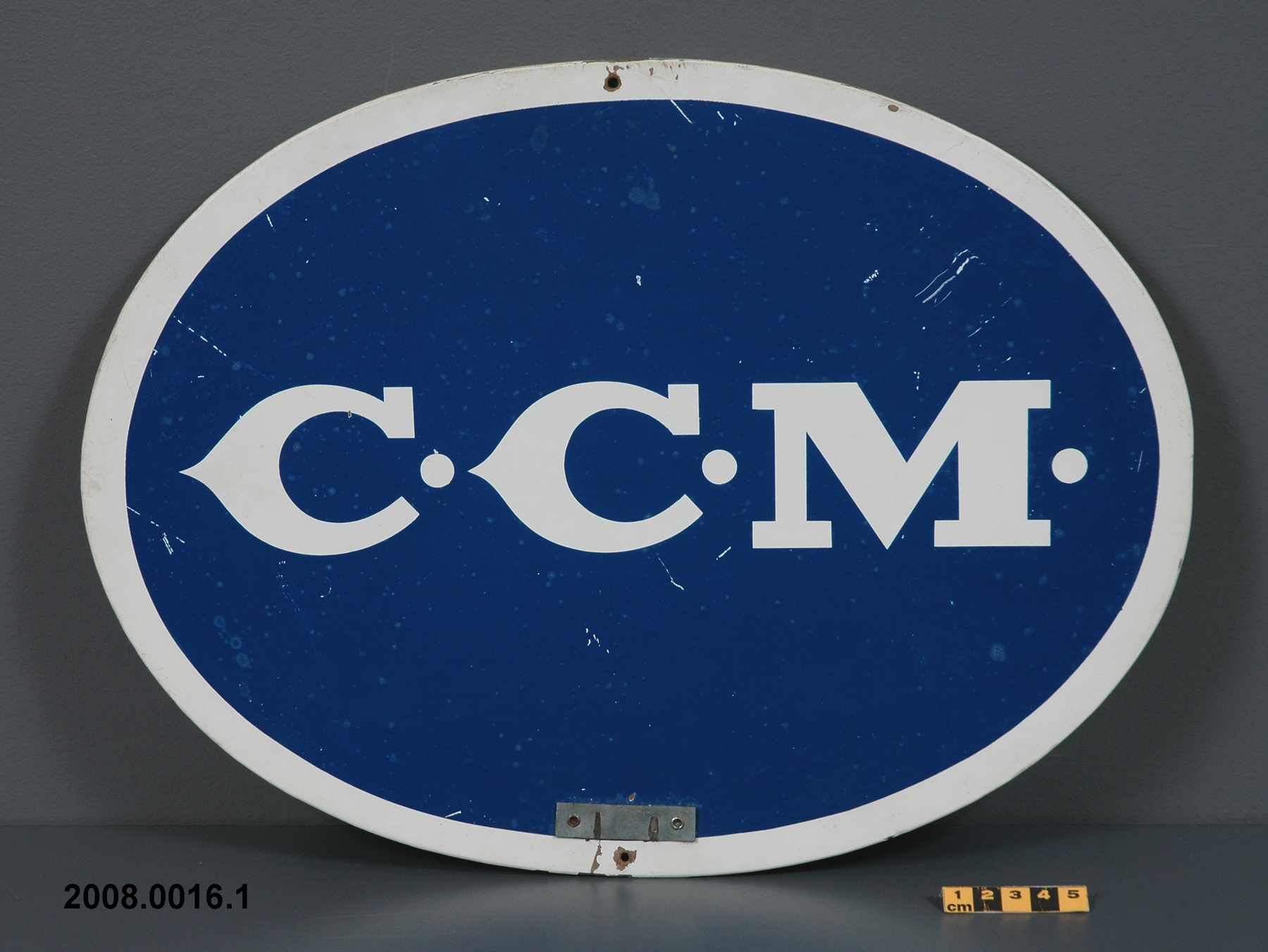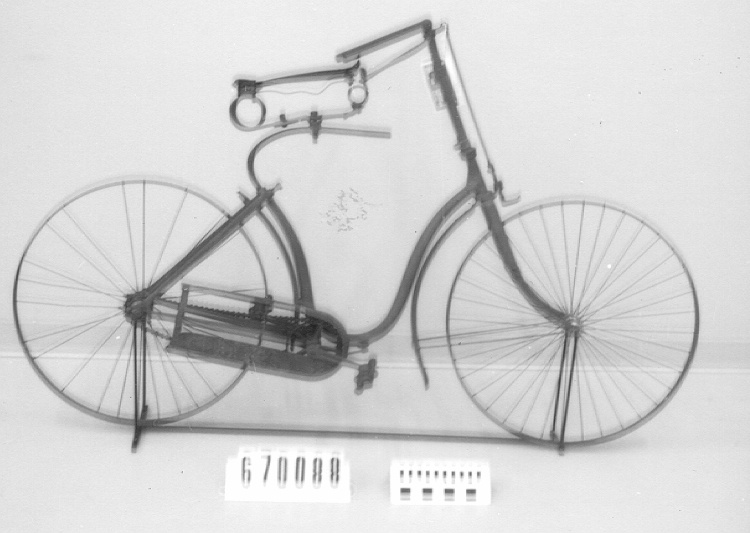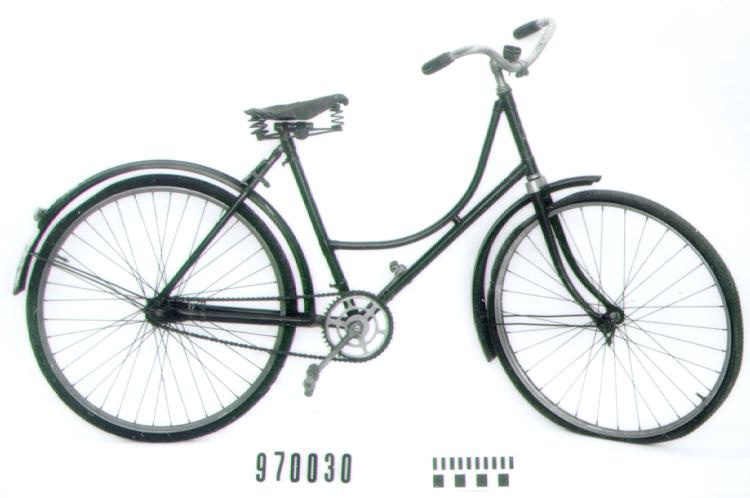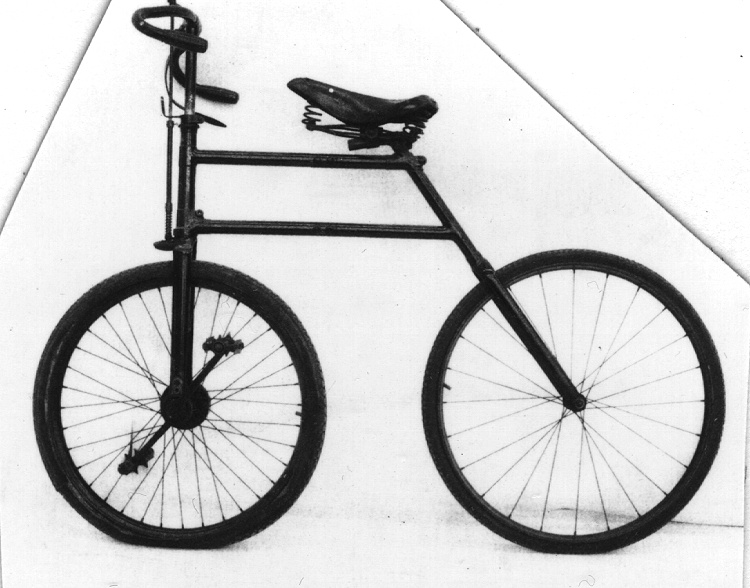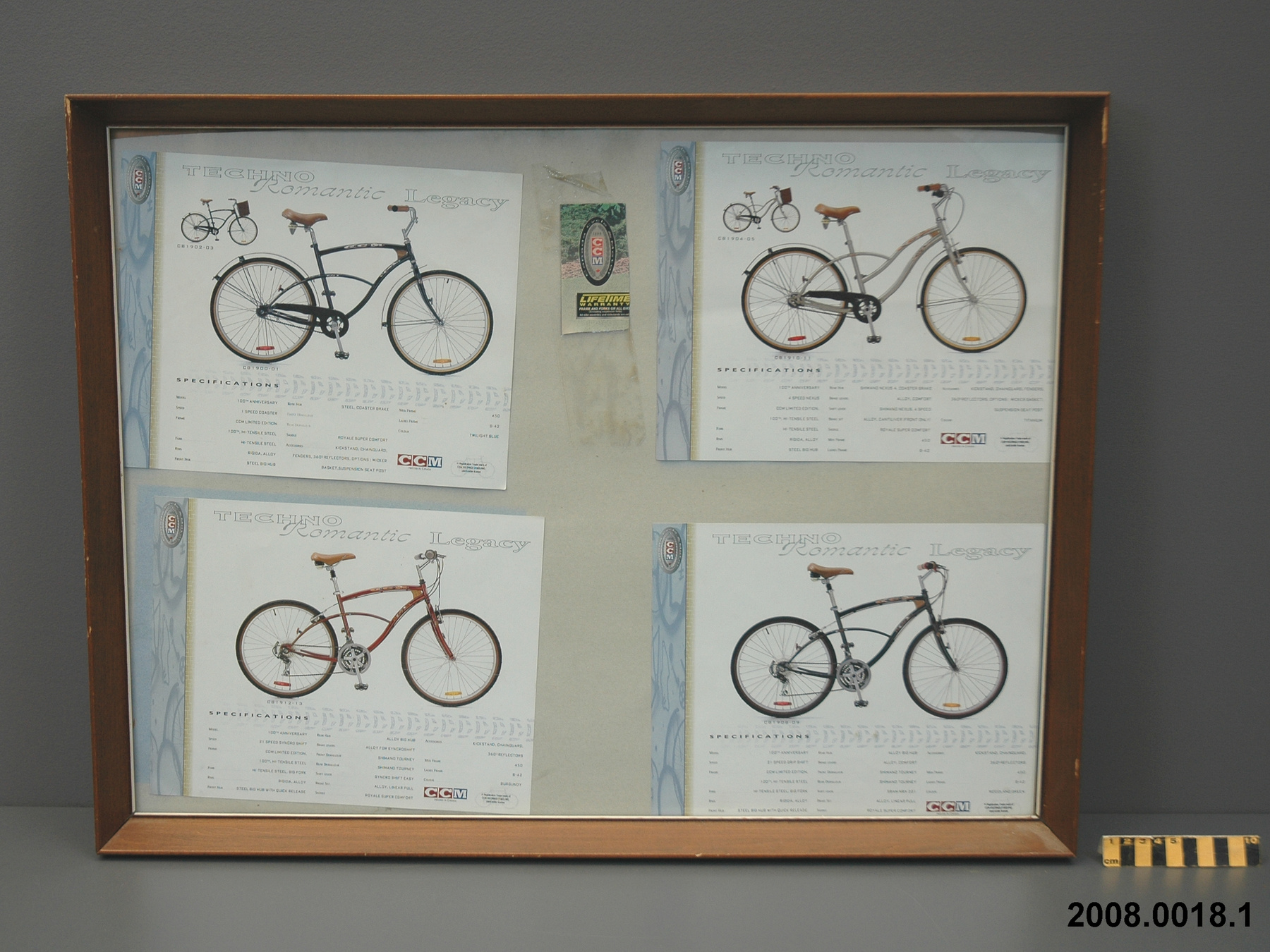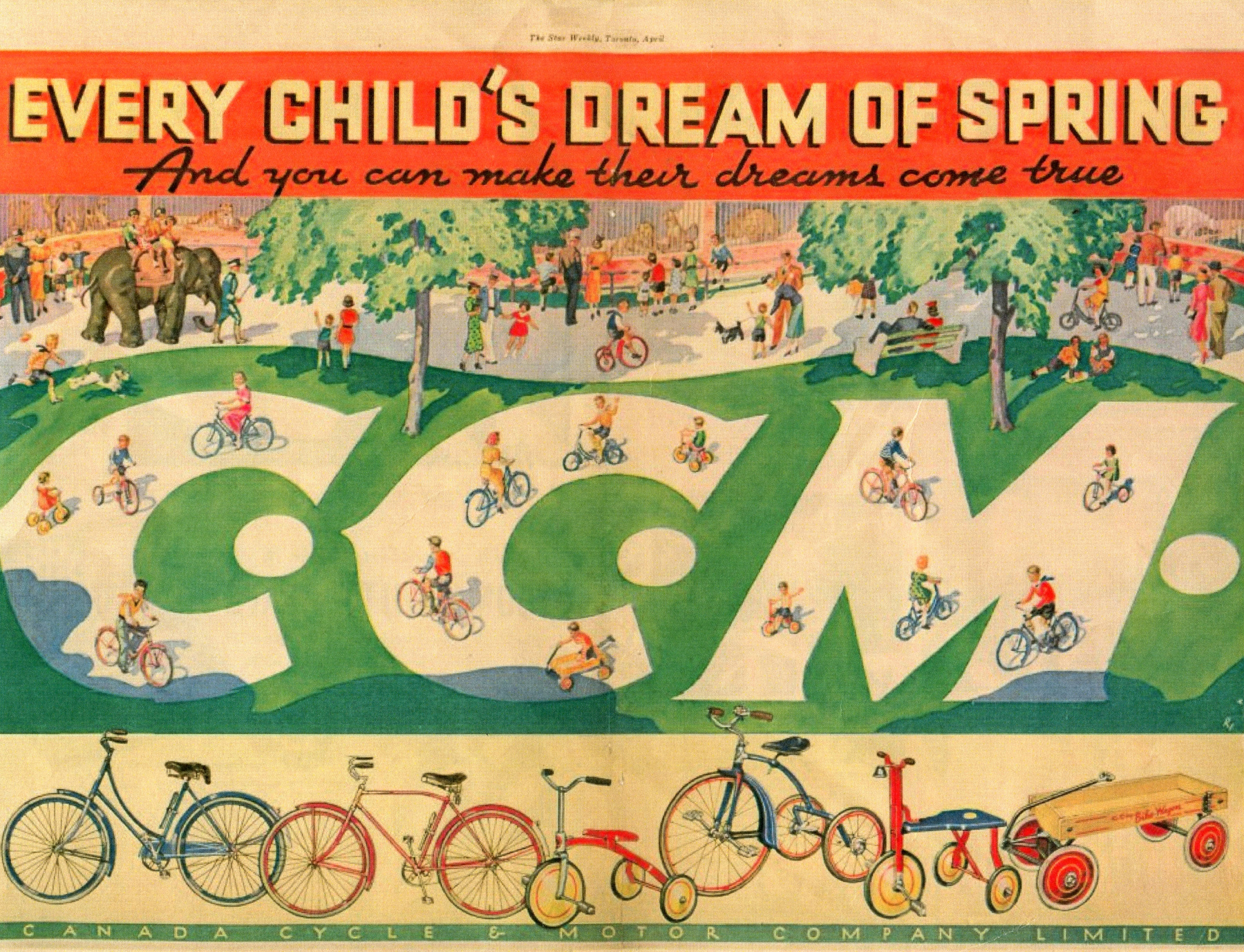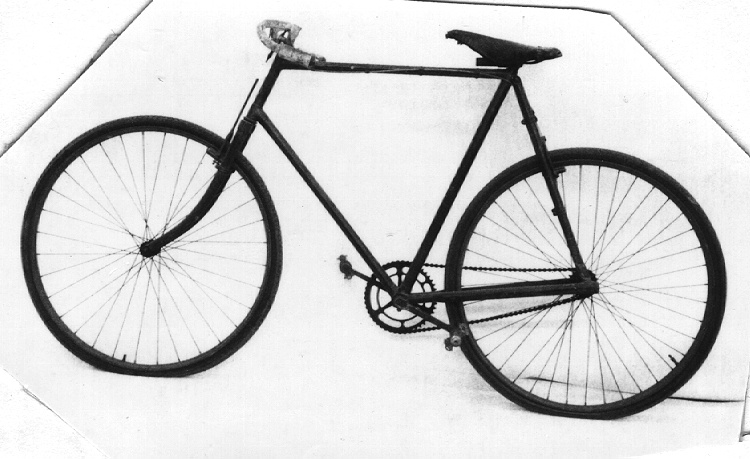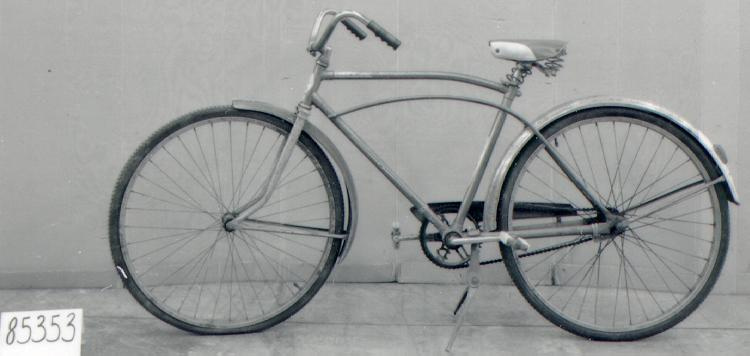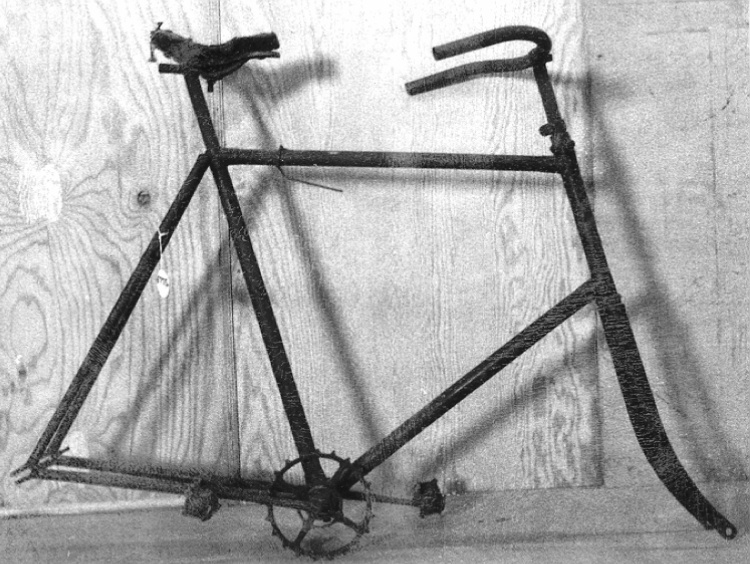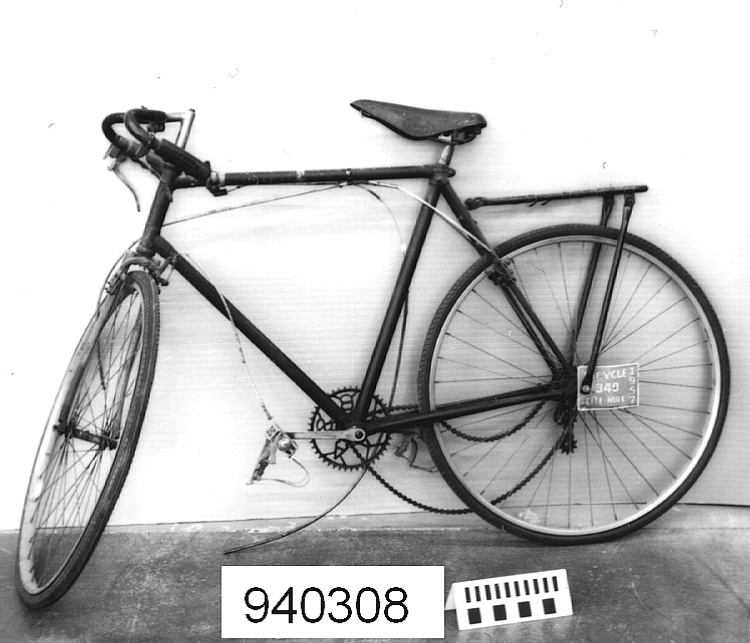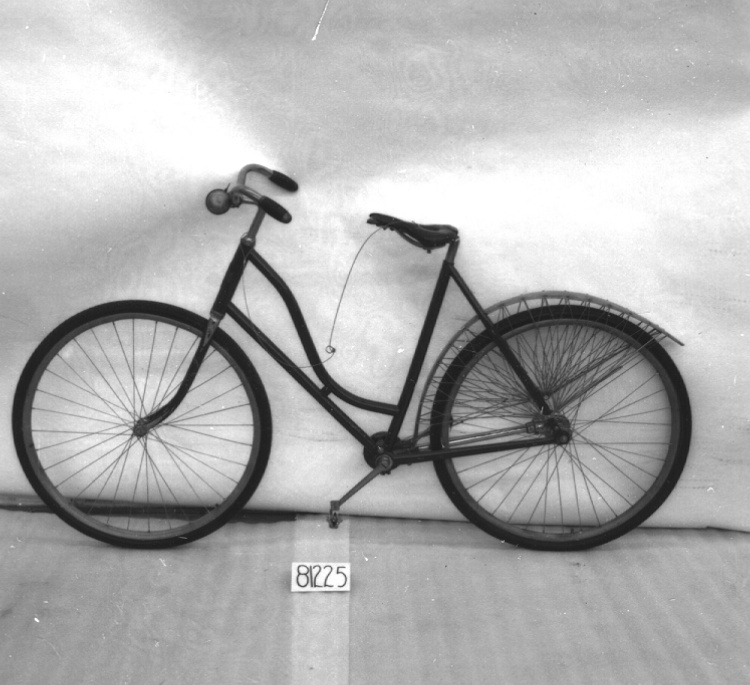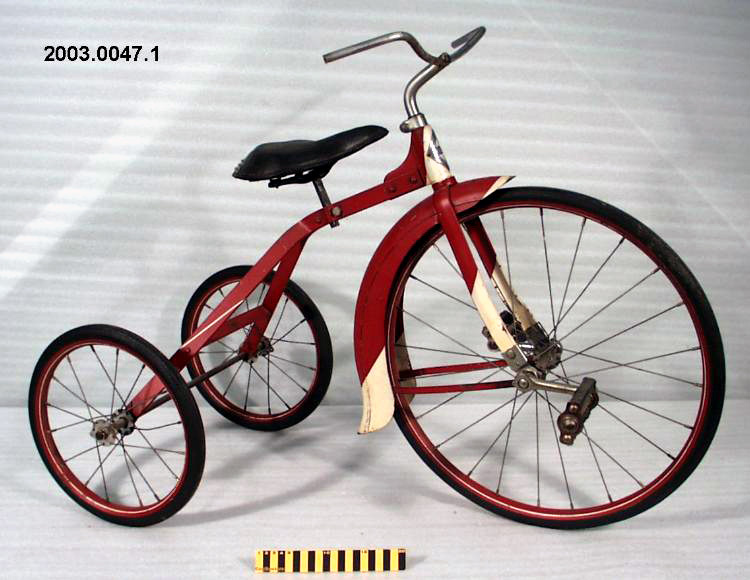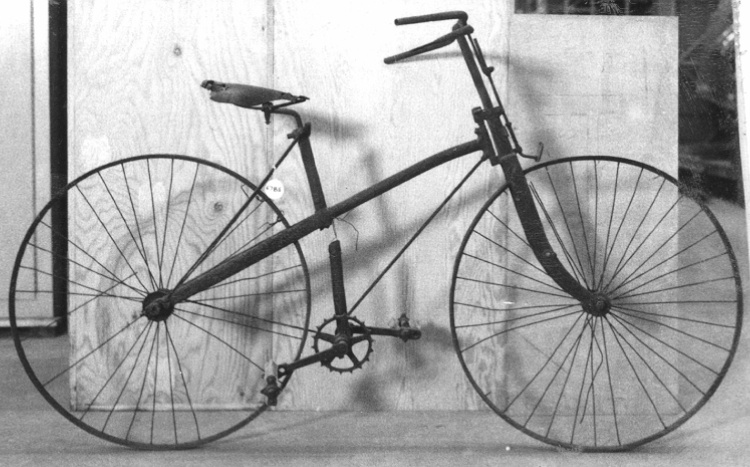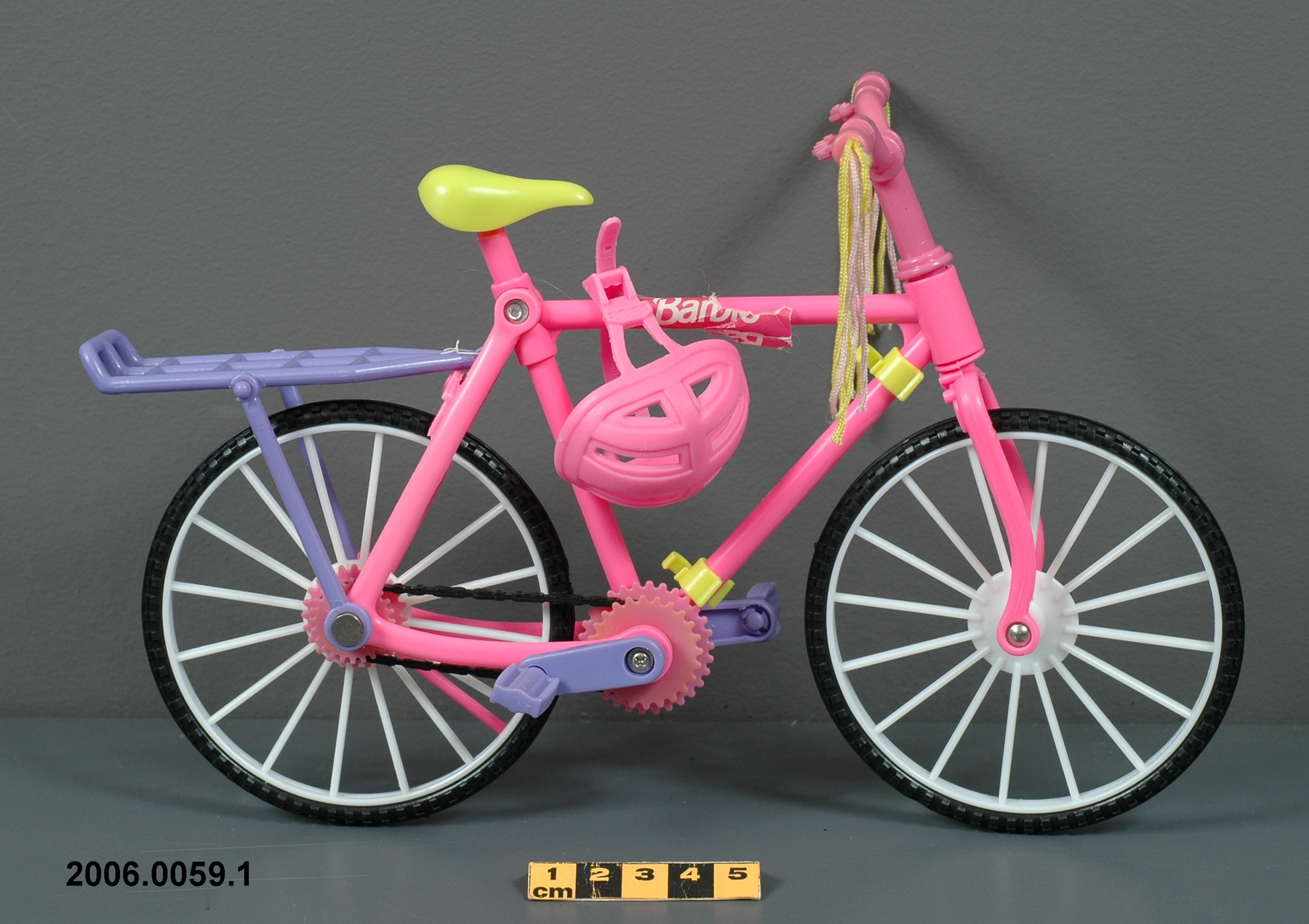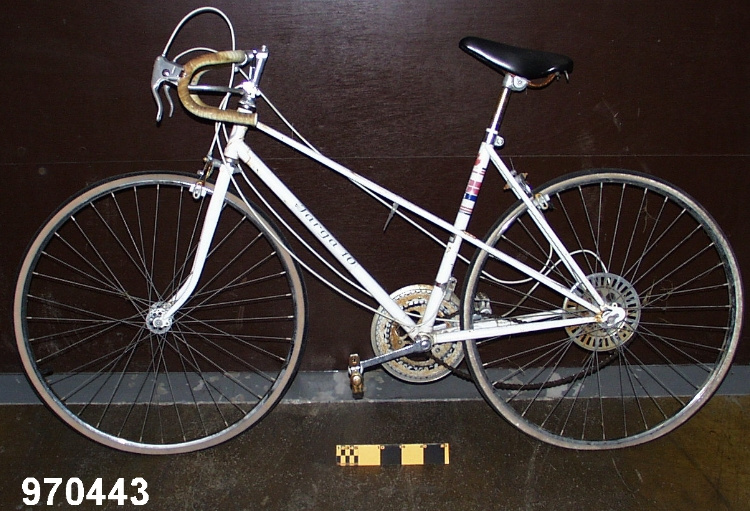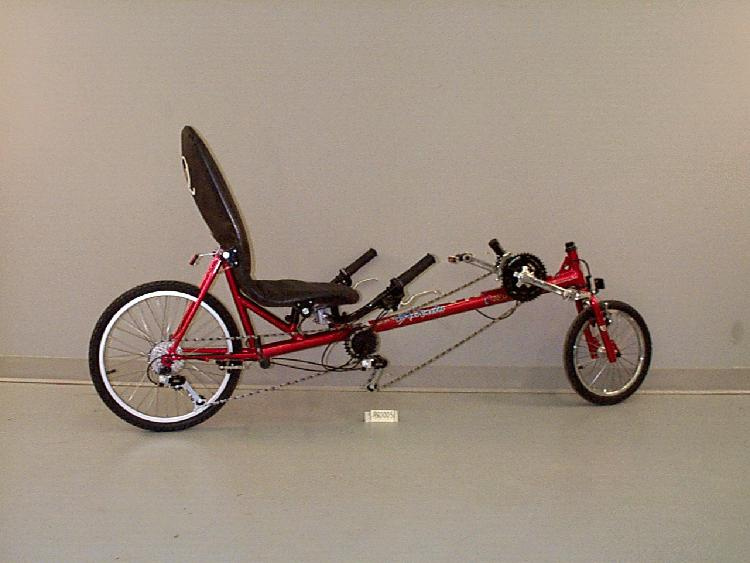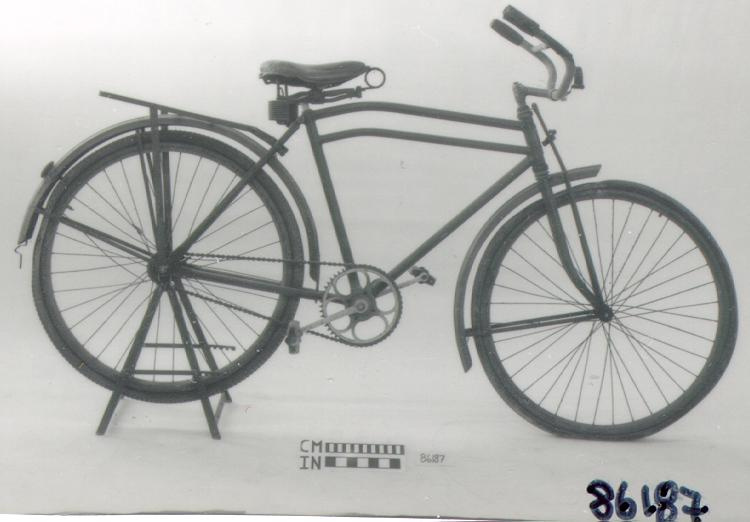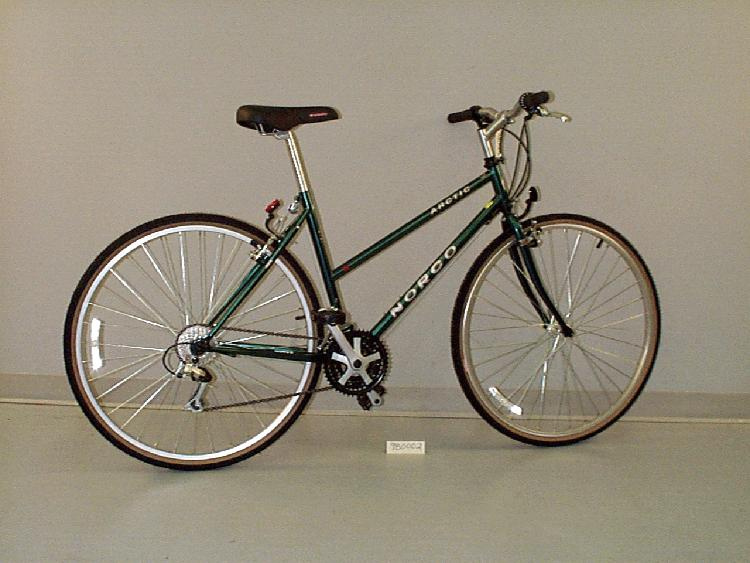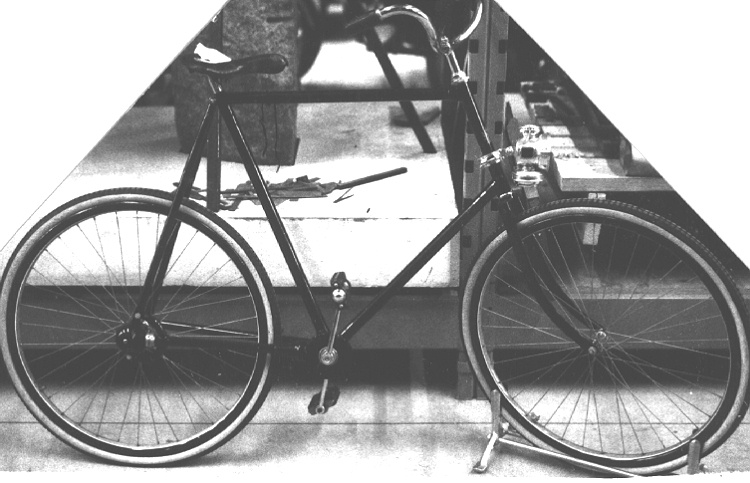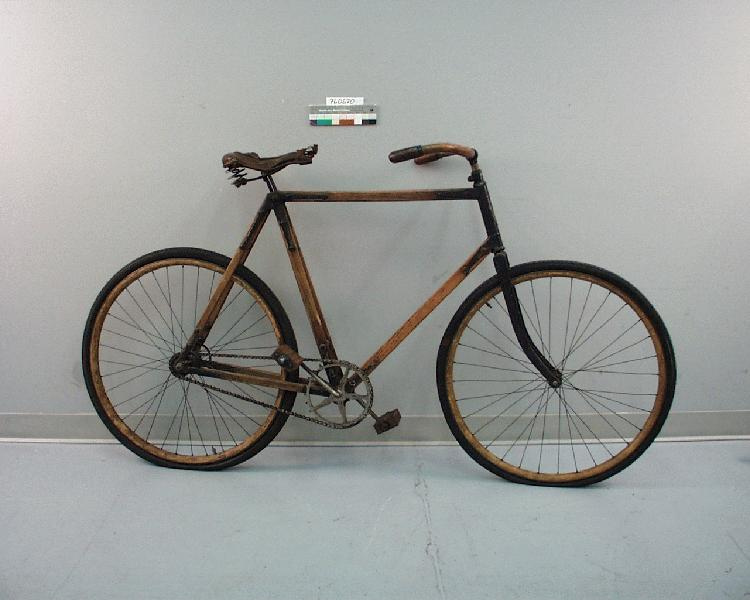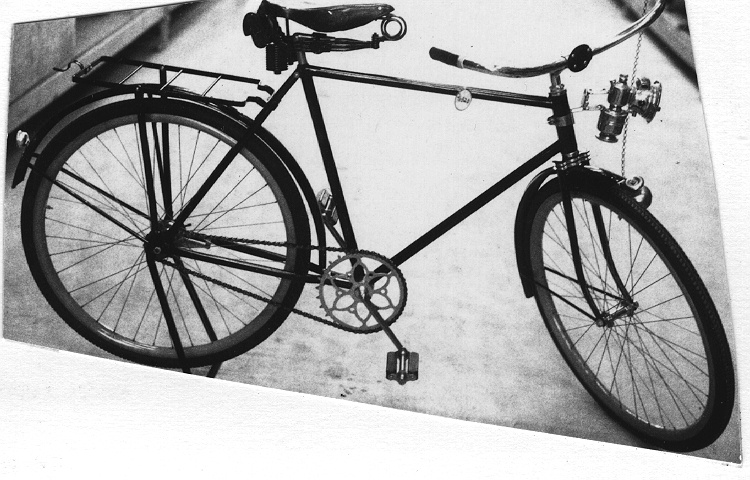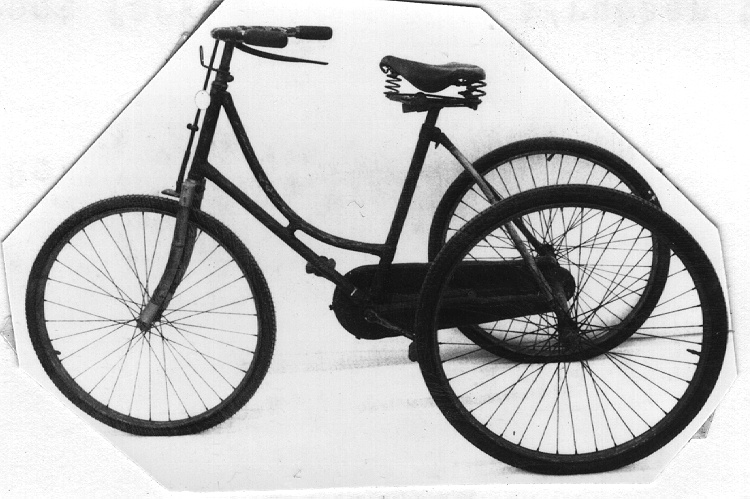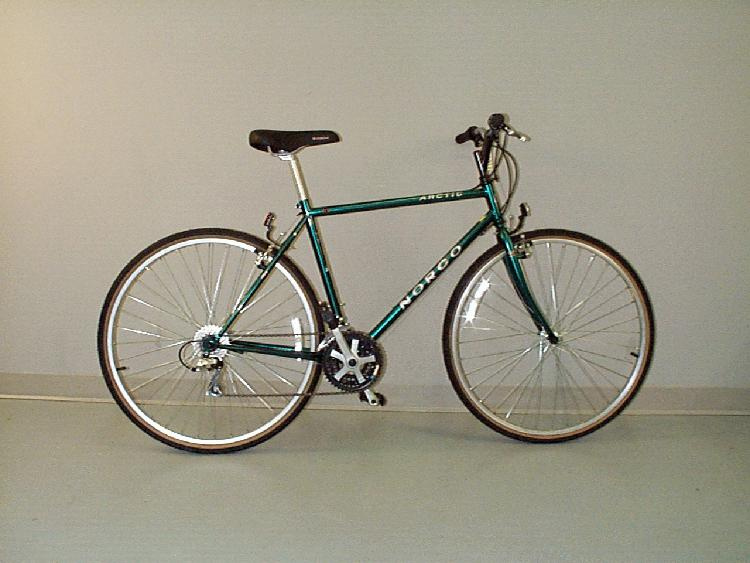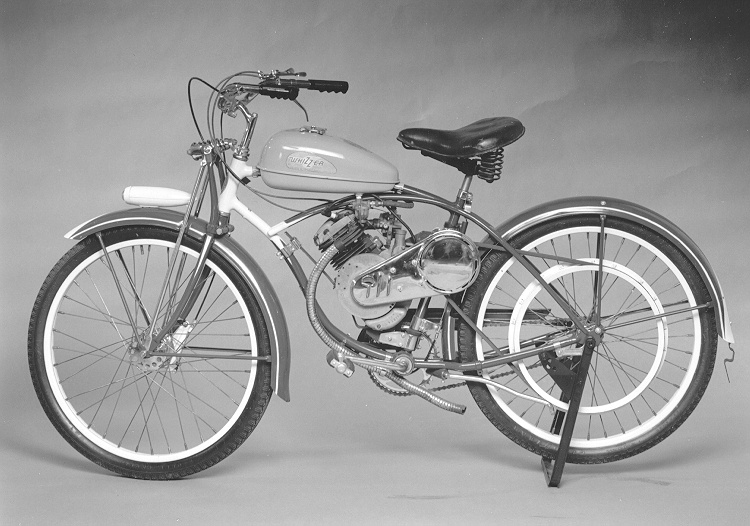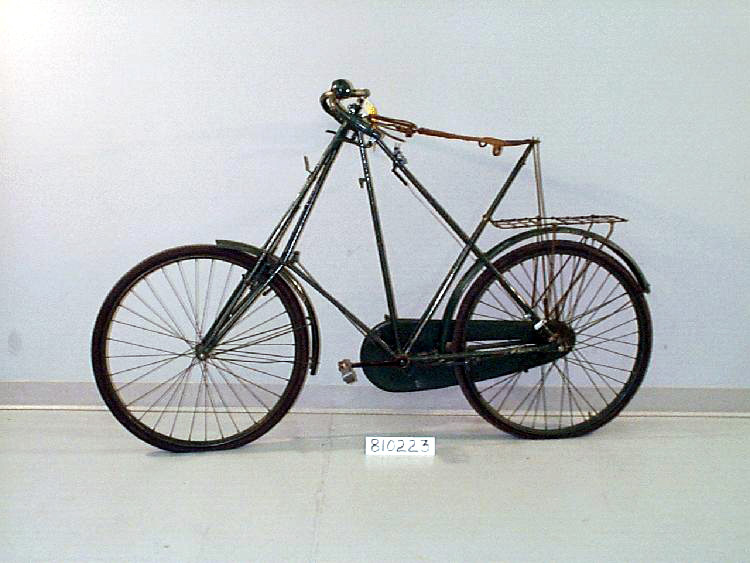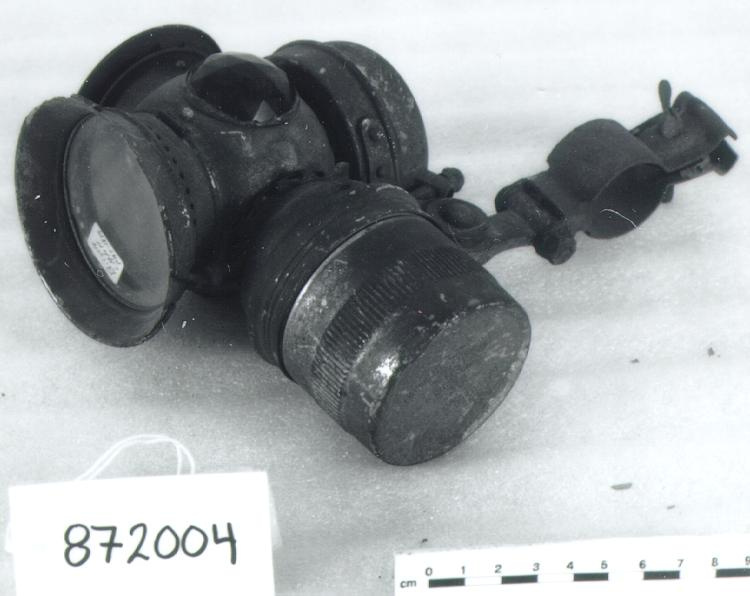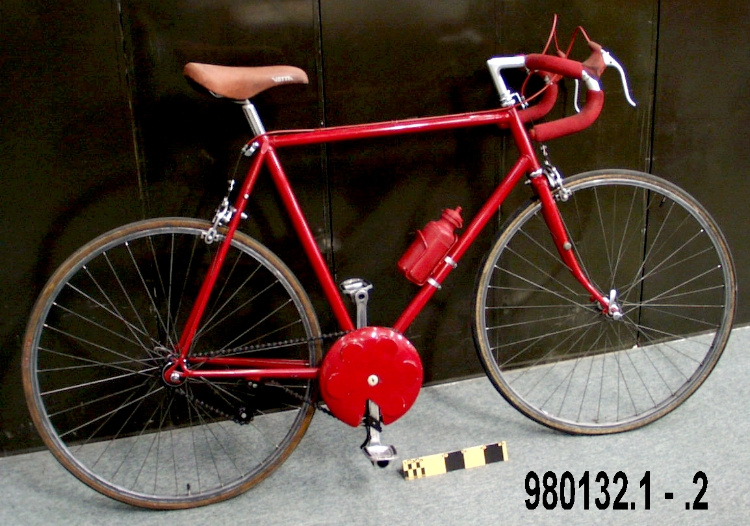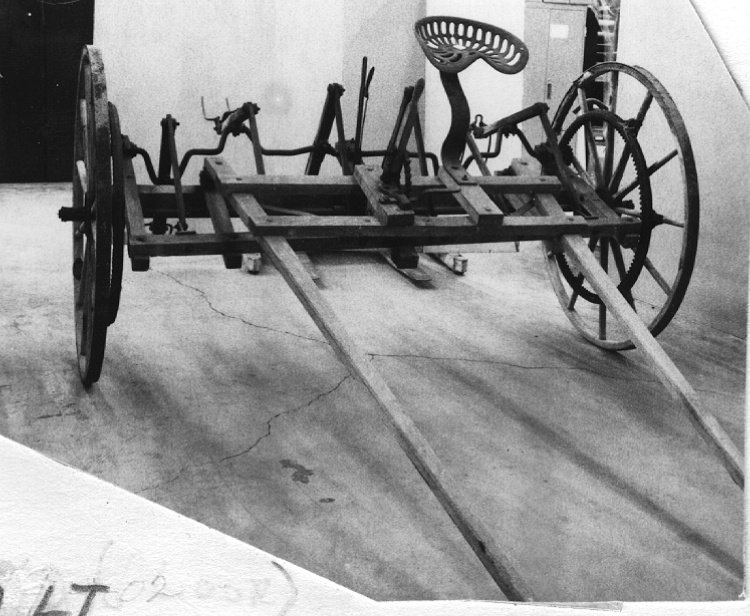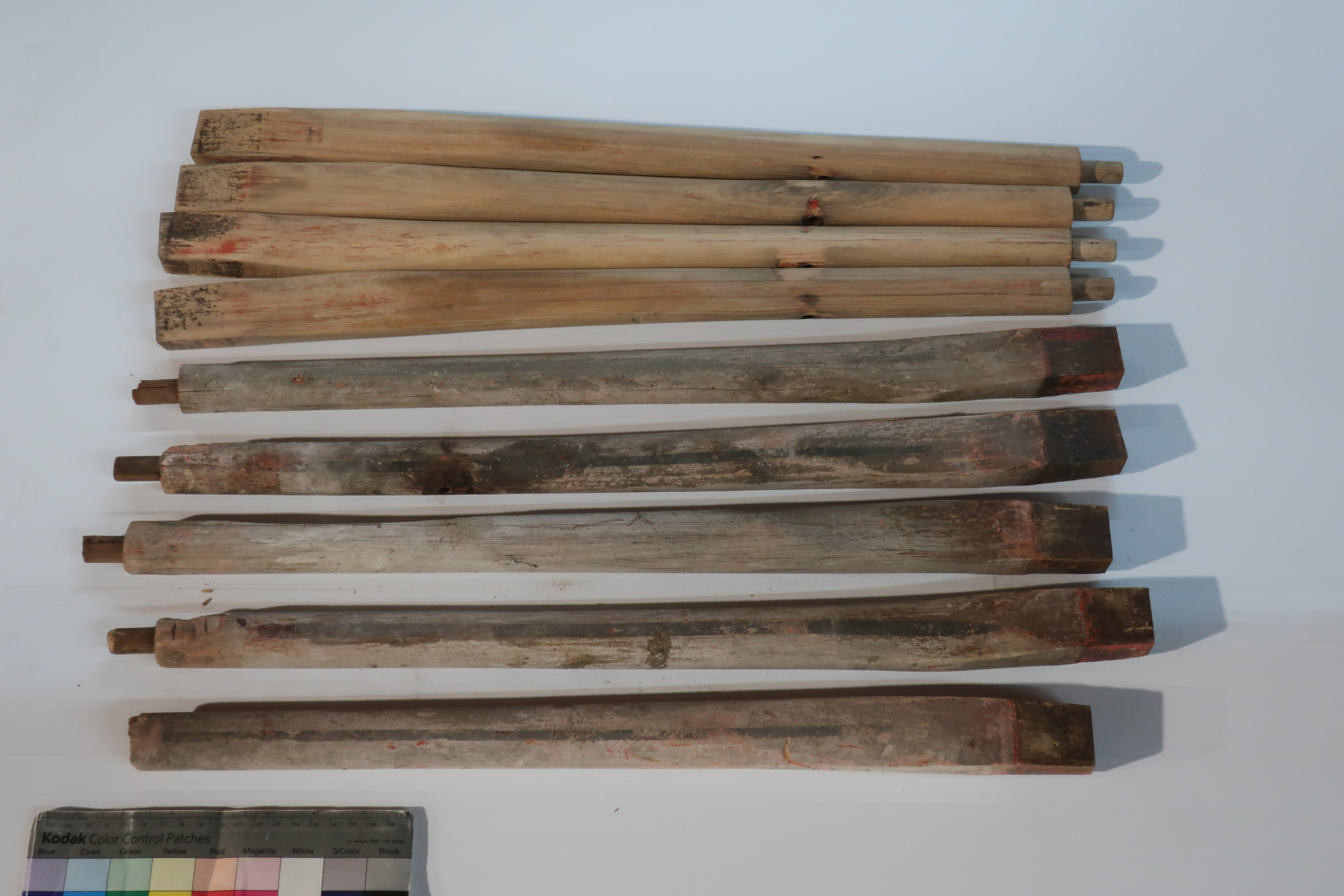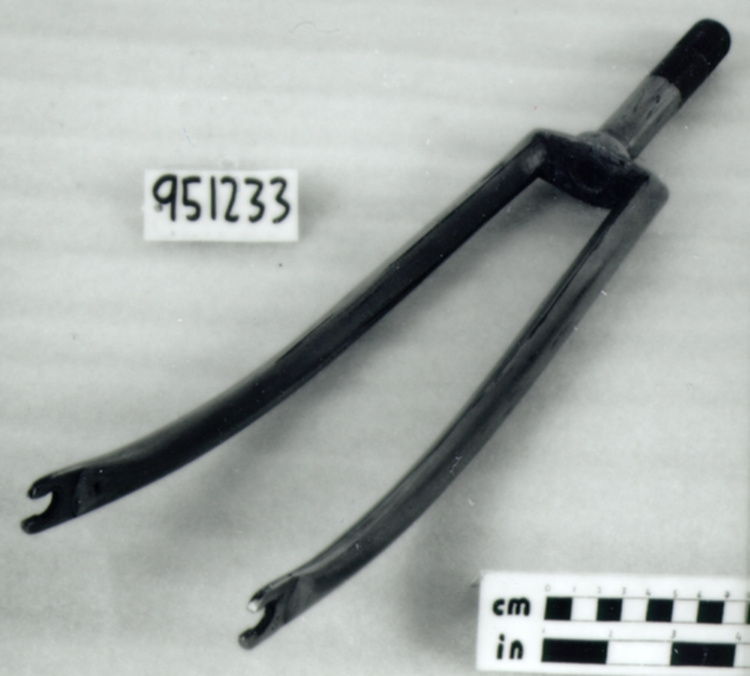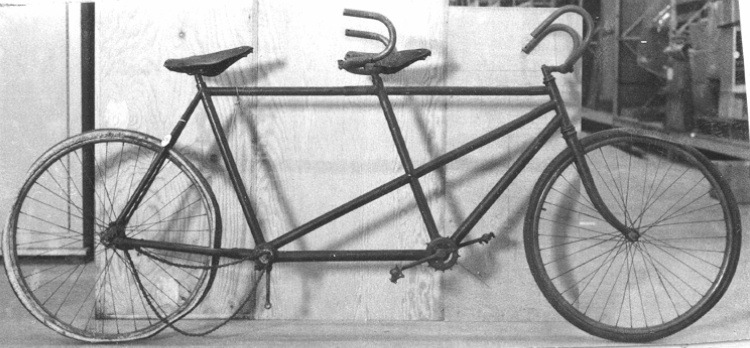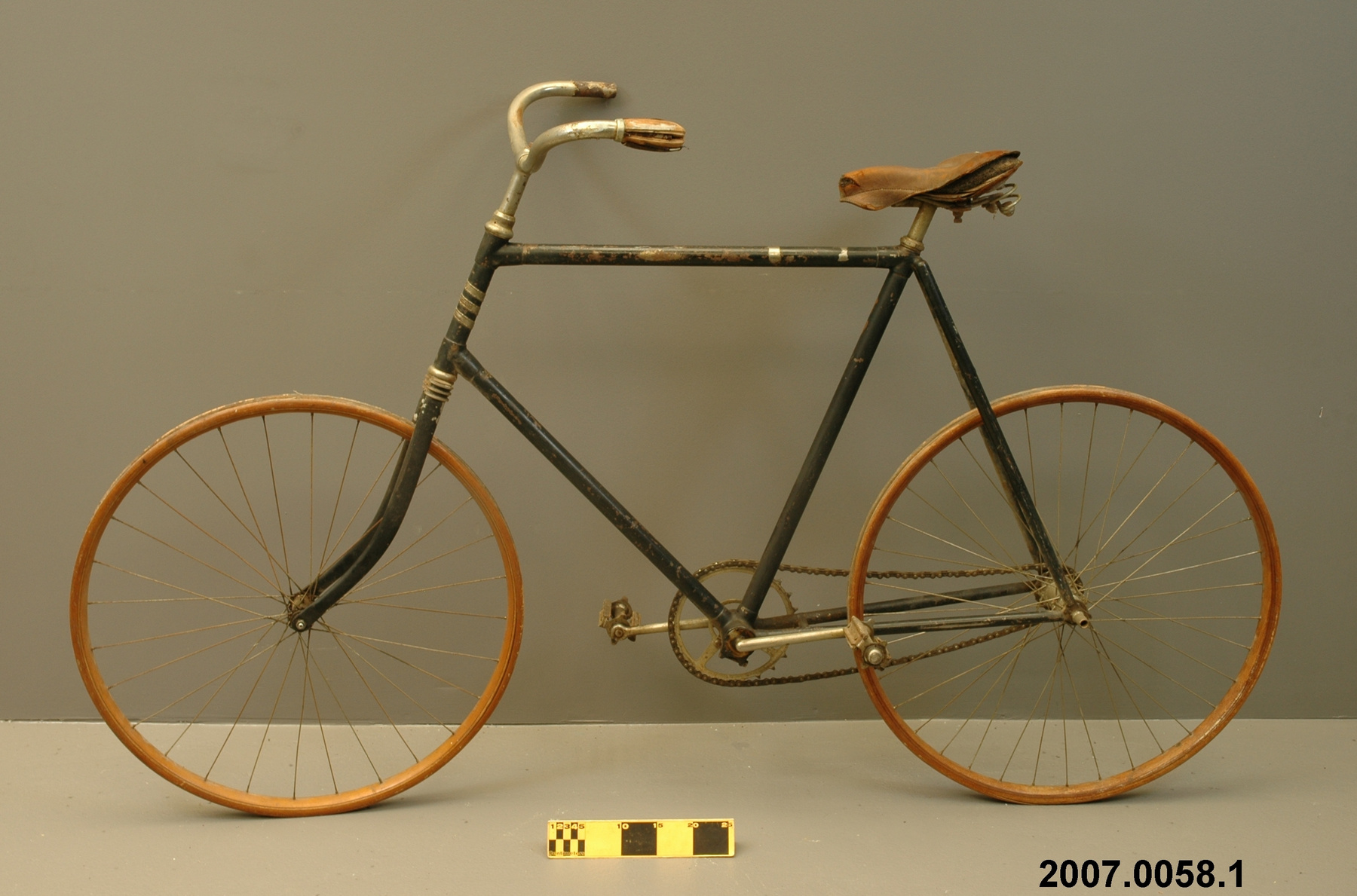Bicycle
Use this image
Can I reuse this image without permission? Yes
Object images on the Ingenium Collection’s portal have the following Creative Commons license:
Copyright Ingenium / CC BY-NC-ND (Attribution-NonCommercial 4.0 International (CC BY-NC 4.0)
ATTRIBUTE THIS IMAGE
Ingenium,
2007.0057.001
Permalink:
Ingenium is releasing this image under the Creative Commons licensing framework, and encourages downloading and reuse for non-commercial purposes. Please acknowledge Ingenium and cite the artifact number.
DOWNLOAD IMAGEPURCHASE THIS IMAGE
This image is free for non-commercial use.
For commercial use, please consult our Reproduction Fees and contact us to purchase the image.
- OBJECT TYPE
- safety/chain drive/diamond frame/mens
- DATE
- 1899
- ARTIFACT NUMBER
- 2007.0057.001
- MANUFACTURER
- Massey-Harris
- MODEL
- 6
- LOCATION
- Toronto, Ontario, Canada
More Information
General Information
- Serial #
- N/A
- Part Number
- 1
- Total Parts
- 1
- AKA
- N/A
- Patents
- N/A
- General Description
- metal frame, headset, handlebars, forks, stays, crankset, chain and parts/ wood rims and hand grips/ leather saddle
Dimensions
Note: These reflect the general size for storage and are not necessarily representative of the object's true dimensions.
- Length
- 175.0 cm
- Width
- 44.0 cm
- Height
- 104.5 cm
- Thickness
- N/A
- Weight
- N/A
- Diameter
- N/A
- Volume
- N/A
Lexicon
- Group
- Non-motorized Ground Transportation
- Category
- Cycles & cycling
- Sub-Category
- N/A
Manufacturer
- AKA
- Massey
- Country
- Canada
- State/Province
- Ontario
- City
- Toronto
Context
- Country
- Canada
- State/Province
- Ontario
- Period
- circa 1899 +
- Canada
-
An example, in original condition, of a bicycle made by one of the biggest Canadian manufacturer of the age, Massey-Harris Co., also an example of a product of one of the five companies which formed in 1899 the Canada Cycle and Motor Co. Massey-Harris was originally founded in 1847 as the Newcastle Foundry and Machine Manufactory to make agricultural implements. It became the Massey Manufacturing Co. in 1855 and in 1879 moved to Toronto. In 1891, Massey joined with its main competitor, A. Harris, Son and Co., to form Massey-Harris Co., which became the largest manufacturer of agricultural equipment in the British Empire. In 1895 Massey-Harris decided to diversify its products and began producing bicycles, with the first appearing in 1896. In 1899 the bicycle market began to stagnate in the U.S. and then Canada, and there was great competition with American producers. When some of the American firms amalgamated and planned to establish a branch plant in Hamilton, Ontario, the five large Canadian bicycle manufacturers which still controlled 85% of the domestic market (H.A Lozier, Gendron, Massey-Harris, Gould and Welland Vale) amalgamated in1899 to form the Canada Cycle and Motor Co. CCM remained Canada's primary manufacturer of bicycles until the 1950's, continuing to produce them until its bankruptcy in 1983. In the era during which when the original owner Mr. Sutherland bought the bicycle, circa 1899, the bicycle industry had reached its pinnacle. By the beginning of the 1890s, there was phenomenal growth in the number of bicycle manufacturers and of cyclists in Canada as in other countries, which caused a bicycle boom towards the end of the century. In 1899 the market collapsed and in that year that the company Canada Cycle and Motor Co was formed. By 1899, the bicycle was no longer only the exclusive privilege of the elite other and more and more people of other social classes could aspire to own one. The introduction of American manufacturing methods made bicycles less expensive and new designs made them easier to ride. The bicycle was more than a simple means of transportation, it also was a source of entertainment. The bicycle's history was provided by Mrs. Crowe, a former neighbour of a family member of the bicycle's original owner and also the spouse of a later owner. The bicycle originally belonged to Mr. (possibly John) Sutherland of Ottawa. Mr. and Mrs. Sutherland came from Scotland and in 1900 had a house constructed at 585 Besserer St. The City of Ottawa Directory of 1899 indicates that a Mr. Andrew Sutherland lived at 585 Besserer; however in 1897-1898 the lot was listed as vacant. Mr. Sutherland's profession and the first name of his wife are unknown. The couple had three children: Bessy, James and John. In 1980, Mrs. Crowe and her husband Murray moved to 551 Besserer and made the acquaintance of one of the Sutherland's daughters, Jane, who lived in the family home all her life. Around 1987 Jane Sutherland died and Murray Crowe bought this bicycle and an incomplete Massey-Harris Model 3 bicycle in the ensuing estate sale, intending to restore them. That never happened and upon her husband's death, Mrs. Crowe offered the bicycles to another neighbour, Mr. Peter Rinfret, who sold the Model 6 to this museum. - Function
-
A human-powered personal transportation or recreational vehicle for one person. - Technical
-
An example of a safety bicycle from the time of peak of the bicycle boom of the late 19th century, with a tube frame, triangular in form, painted black with metal handlebars, wood rims, a Gordon spring saddle, and a chain transmission. In the 1870's and 1880's, the safety bicycle in a form close to its current one was developed, with different manufacturers creating their own versions. In 1890 Humber introduced the first bicycle with the modern triangular form and such other elements which have been used in bicycles ever since such as a ball bearing rakee and set steering head and fork, moveable rear wheel in slotted fork ends to permit chain-tension adjustment, and wheels substantially the same diameter. By 1897, the design of the bicycle was more finalized and new developments were in the areas of weight, speed, saddles, tires etc. Massy-Harris' first products, the men's Model 1 and the women's Model A, appeared in 1896. M-H obtained the rights to manufacture the Columbia bicycle made by the Pope Manufacturing Co, at that time the largest bicycle manufacturer in the world, and used that technology in the development of their quality bicycles. M-H had title to at least two patents relating to bicycle technology. The company logo became the Silver Ribbon in 1896. The next year, in addition to its deluxe men's and women's models, M-H offered a medium price model. The model 6 was introduced in 1899 and incorporated the following improvements: a steel body, adjustable handlebars, an expanding seat post, large barrel type hubs, ball retainers, crank hangers, a Perry chain, and Dominion non-splittable rims. After M-H became part of CCM, the Massey line was continued until about 1930 but not under the name of Massy-Harris. - Area Notes
-
Unknown
Details
- Markings
- raised lettering on riibbon reads 'MODEL 6/ MASSEY-HARRIS/ TORONTO,/ CANADA'
- Missing
- tires; 1 hand grip is detached and split in half
- Finish
- frame, forks, stays painted black/ plated handlebars/ black painted hand grips/ brown saddle/ wood rims stained brown and coated?
- Decoration
- silver ribbon formed by metal strip with raised stylized foliage designs along both edges wound 3 times around head tube
CITE THIS OBJECT
If you choose to share our information about this collection object, please cite:
Massey-Harris, Bicycle, 1899, Artifact no. 2007.0057, Ingenium – Canada’s Museums of Science and Innovation, http://collections.ingeniumcanada.org/en/id/2007.0057.001/
FEEDBACK
Submit a question or comment about this artifact.
More Like This
